Hot Topic: Surprise Cruise Reveal Ideas


Complete Guide to Closed-Loop Cruises (and Open Jaw Itineraries)
Cruising, as you may know, is one of the best ways to explore the world’s coastlines and nearby cities. But what if you lack a passport or your passport has expired? Exactly what are the passport requirements to cruise?
As a United States resident, you may benefit from the ease of a so-called closed-loop cruise and not need a passport for a cruise vacation at all. Let’s dive in.
Disclosure: This page has affiliate links, meaning we may earn a small commission if you click the link and proceed with a purchase at no cost to you . We truly only recommend cruises, experiences, products, and services we personally use. As Amazon Associates, we earn from qualifying purchases.
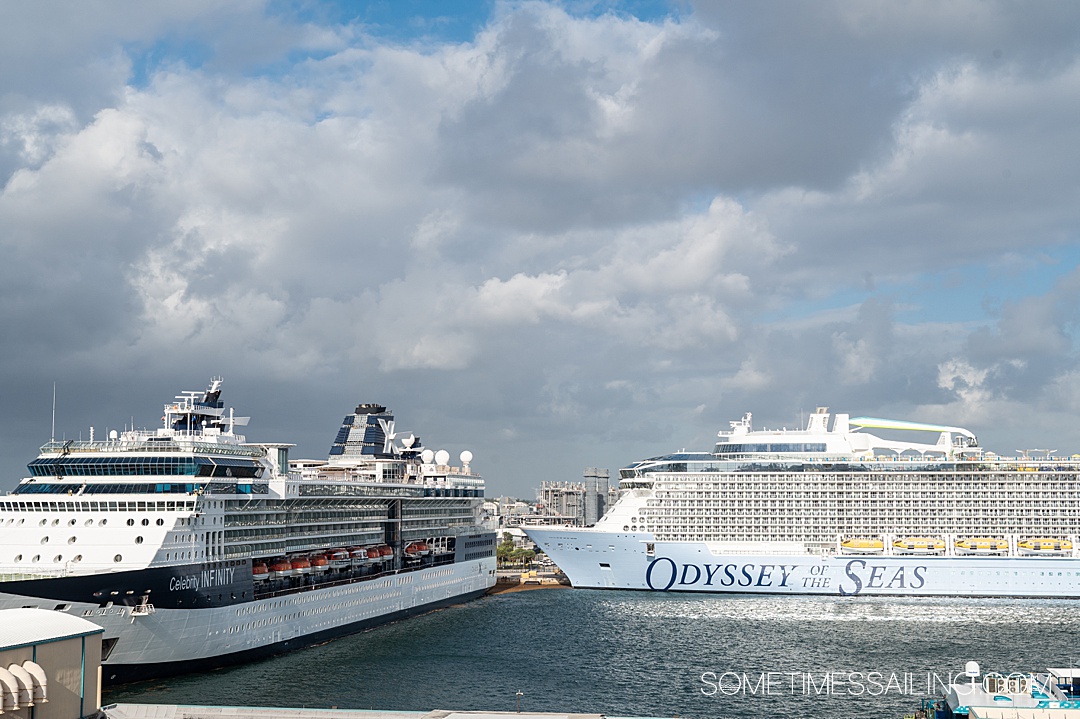
What is a Closed Loop Cruise?
First, let's define a closed loop voyage.
The itineraries of closed-loop cruises begin and end in the same port. For purposes of this conversation, that port is in the United States (even though the term “closed loop cruise” could be used to describe a cruise that starts and ends in the same city in another country).
Think of it like a closed circuit, with the ship literally closing a geographical loop, even if that loop is an imperfect shape. However, along the route, you might stop at a few other places, either in the United States or abroad.
The benefit of taking these “round-trip cruises” is that American travelers don’t necessarily need a passport as long as the trip begins and ends at the same U.S.A. port. However, you must understand the nuances of the itinerary you choose if you don’t have a passport, even if you have a travel agent to help guide you.
That’s why we stress how imperative it is to read the detailed information below about identification requirements.
Closed Loop Cruise Origins
So how did closed-loop cruises come about? Well, in order to comply with U.S. maritime rules and the Passenger Vessel Services Act (also known as the Jones Act), all foreign-registered cruise lines leaving from American ports are required to include a port abroad.
Nearly all cruise ships are foreign-flagged, so they must stop outside the nation. ( US River Cruise ships are an exception to the foreign-flagged generalization.) These destinations are usually contiguous United States territories such as Mexico, Canada, Bermuda, and the Caribbean islands.
Example of a Closed-Loop Cruise
Here’s an example of a closed-loop cruise itinerary that starts and ends in a United States Cruise Port :
- A 4-night cruise departs from the Port of Miami in Florida.
- It makes a port of call in Nassau, in the Bahamas…
- …then sails onto Half Moon Cay.
- The cruise returns to Miami to disembark, where it departed from.
Disney Cruise Line has a very similar 3-day or 4-day itinerary, usually departing from Port Canaveral, which is on Florida’s Space Coast near Cape Canaveral . It leaves, returns to Port Canaveral, and stops at Disney’s Castaway Cay island and Nassau in between.
While these 3 or 4-day itineraries are considered short, there are plenty of longer sailings with more Port of Call available across many cruise lines.
Most of the itinerary options are on bigger ships with 1,500+ passengers.
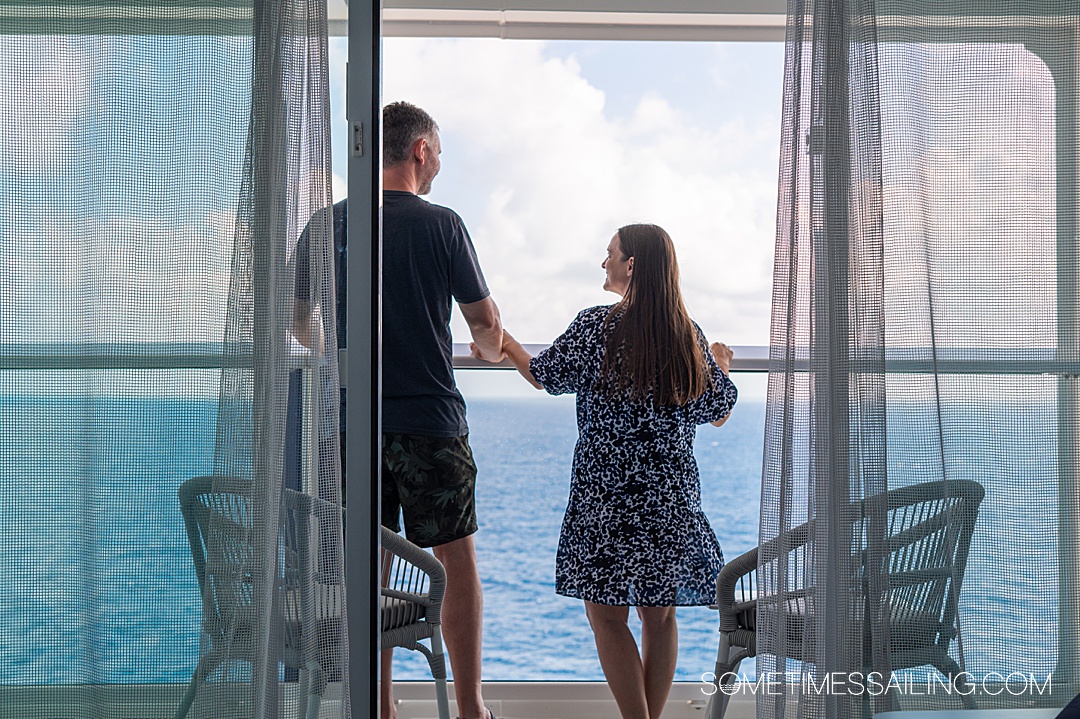
If a Cruise Starts and Ends in the United States but From Two Different Ports, is it a Closed-Loop Cruise?
No. If a cruise starts in San Diego but ends in Los Angeles, for example, it is an open-jaw cruise, not a closed-loop cruise.
Another example: If a cruise starts at Port Everglades in Fort Lauderdale but ends in the Port of Miami, it is not a closed-loop cruise.
What is an Open Jaw Cruise or Itinerary?
Perhaps you’d prefer to explore beyond the destinations of a closed-loop cruise.
A cruise that departs from one port and arrives/ends at a separate port of call is known as an “Open-Jaw Cruise.” Sometimes they’re referred to as “Open Loop” or “Repositioning” cruises.
While these ocean trips on the high seas require a passport, you can access many more countries.
On a map, such a trip may appear as a triangle or an “open jaw.” For example, you may do a yacht cruise on the Mediterranean as we did that departs from Athens, explores Greece, then heads to Sicily and ends on mainland Italy, and takes a flight home from Rome.
Without geographic restrictions, ships with an open itinerary can travel farther and often stop at more ports. This may also entail visiting places that other cruises would not have the time or ability to visit, such as more exotic locations.
Do you Need a Passport for a Closed Loop Cruise?
A passport is typically not required for a closed-loop cruise for United States citizens if the cruise starts and ends in the same U.S. port.
For example, this has made Hawaiian Islands, U.S. Virgin Islands, and Alaska cruises very popular.
You Need Valid Government Identification, Even if Not a Passport
However, valid identification to board the ship is required; you must also show that identification upon reentry to the US. Such ID includes proof of citizenship and a government-issued ID. If you happen to have a valid passport, it’s the only ID required.
Shop for Cruise document Holders
Stay organized with a dedicated container, book, or pouch for all your cruise documents, including your identification.
Ensure that this remains in your carry-on bag as you embark and disembark the ship.
Check it out >

What Documentation Is Needed For A Closed-Loop Cruise?
Nervous about going on a cruise without a passport? While it’s true that you don’t need a passport for most US closed-loop cruises, you must present two forms of ID to board a closed-loop cruise ship.
These forms of ID should be carried with you when you disembark at each port of call.
Two Forms of ID
As we mentioned, adults must have two ID forms to board a cruise if they don't have a passport. The two documents must fall under the two categories listed below.
1. Proof of Citizenship
One form of ID must be your proof of US citizenship. For example, this can be a government-issued birth certificate.
2. Government-Issued ID with Requirements
The second acceptable piece of identification must be a government-issued ID with your photo, full name, and date of birth. A driver’s license will suffice.
U.S. Customs and Border Protection offers a comprehensive list and details the criteria for taking a cruise without a passport, including what constitutes a government-issued photo ID.
Always check to see the latest details of the requirements before you book your cruise, while you await your cruise, and about four weeks before your cruise to make sure you’re good to go.
While U.S. Customs recommend an Enhanced Driver’s License (EDL) as a passport alternative, very few states offer this form of government-issued ID.
It’s also important to mention that as an ID, driver’s licenses are only accepted at land border crossings and sea border crossings, not airports for international destinations. You can also only use a valid driver’s license to re-enter the United States from Canada, Mexico, and the Caribbean.
Closed-Loop Cruise Documentation
- Voter registration card/ID
- Social security card
- Baptismal papers
- Hospital certificates of birth
Enhanced Driver's License vs. Real ID
Is a Real ID the same thing as an EDL? No. It is not.
The short answer is that EDLs can be used for limited border crossings and is only available in specific border states. Whereas a Real ID is available in all states, it cannot be used to cross borders like an EDL or passport.
A Real ID does not have an additional cost to obtain. It differs from previous driver's licenses because it shows a star icon in the top corner of the license.
An EDL is only offered in a handful of states and costs an additional $30.
The Department of Homeland Security states the following about an EDL:
Enhanced Drivers Licenses (EDLs) are state-issued enhanced drivers licenses that provide proof of identity and U.S. citizenship. They are issued in a secure process, and include technology that makes travel easier. EDLs are a low-cost, convenient option for entering the United States from Canada, Mexico or the Caribbean through a land or sea port of entry, in addition to serving as a permit to drive. DHS Enhanced Driver's Licenses: What Are They?
EDLs are only available to residents of the following states:
Real IDs are available in 55 states and territories, however, it is not a viable document to cross a border, including for international sea cruise travel.
REAL ID cards cannot be used for border crossings into Canada, Mexico or other international travel. From “Real ID FAQs” on the Department of Homeland Security
Children Under the Age of 16
For children traveling under the age of 16, a variety of forms of identification, including an original birth certificate or a copy that has been notarized or certified, a Consular Report of Birth Abroad, or a Certificate of Naturalization, are acceptable.
What is Not Acceptable as a Form of ID?
As per the US Government's regulations, documents proving voter registration and social security cards are not recognized as proof of identity.
Lawful Permanent Residents
There are specific rules if you are a Lawful Permanent Resident (LPR) of the United States.
Even though the US Government doesn’t mandate that you need a passport, it is always advisable to double-check as some locations along your cruise journey may have various requirements, including having a visa.
If you are an LPR, you must have your I-551, or Green Card, in order to re-enter the US.
A valid passport from your nation of residence is required if you’re not a U.S. citizen or a LPR of the United States of America.
Closed-Loop Cruises: Popular Port Cities from the United States
U.S. departure ports are plentiful, from coast to coast.
The most popular port cities on the East Coast are Miami and Fort Lauderdale in Florida, the Port of Miami, and Port Everglades, respectively.
On the West Coast, San Francisco sees the most cruise ships pass through every year. Quite a few other city ports are offering closed-loop cruises from the US, so let’s take a look.
West Coast Closed-Loop Cruises
An Alaskan cruise is one of the most popular closed-loop cruise options in the US. If departing from the United States, Alaska cruises depart from Seattle, San Francisco, or Los Angeles. They often stop in Vancouver, British Columbia (in Canada), to pick up more cruise passengers.
Mexican Riviera and Hawaii closed loop itineraries are accessible from the West Coast, departing from the cities of San Pedro and Long Beach, San Francisco, and San Diego.
East Coast Closed-Loop Cruises
If you’re looking to head somewhere warmer such as the Bahamas, look to sail from:
- Florida: Either from Jacksonville, Fort Lauderdale’s Port Everglades, the Space Coast’s Port Canaveral, the Port of Miami, or Tampa.
- Maryland: Baltimore.
- Northeast and New England area: Manhattan in New York City, Cape Liberty in New Jersey, or Boston, Massachusetts.
- Texas: Galveston.
Some of these itineraries even stop in Bermuda if you take a closed loop cruise from Boston, Manhattan, Baltimore, or Cape Liberty.
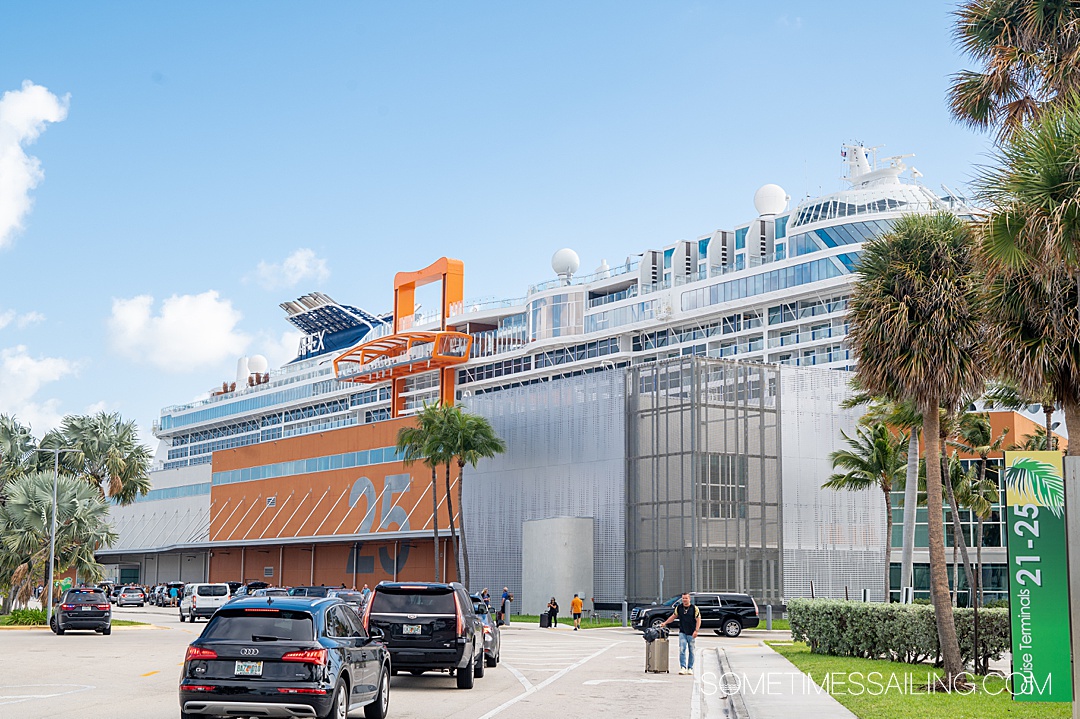
Of course, you can’t forget about a Caribbean cruise! There are quite a few port options if you want to travel to the warm waters of the Caribbean Sea. The main cruise port options with itineraries sailing there are from Port Canaveral, Manhattan, Port Everglades, Baltimore, Charleston, New Orleans, Cape Liberty, Galveston, or Tampa.
Popular Cruise Lines Offering Close Looped Cruises
Though cruise ships and their contracted ports of call may change annually, here’s a list of cruise lines and expected ports they sail from.
Princess Cruises
Princess is one of our favorite cruise lines for a mature audience! It’s not great for traveling with kids but if you’re adults, it’s a wonderful option.
With Princess Cruises , you can travel to Grand Cayman, Puerto Rico, Mexico, or the Bahamas from the United States. They operate many cruises from Fort Lauderdale or off the West Coast, where you can sail from Los Angeles to Mexico or Hawaii.
In fact, we sailed on a wonderful closed-loop California itinerary that stopped in San Francisco, San Diego, Santa Barbara, and Ensanda before heading back to Los Angeles.
Celebrity Cruises
Fort Lauderdale and Miami, Florida, are popular ports for Celebrity Cruises . You can travel to Mexico, the Bahamas, and the Caribbean from here.
It’s another one of our favorite cruise lines, offering class and sophistication to a generally younger audience than Princess Cruises.
We absolutely love their class offerings – our favorite is “in “ The Retreat ” – and recommend booking a suite if you sail with Celebrity.
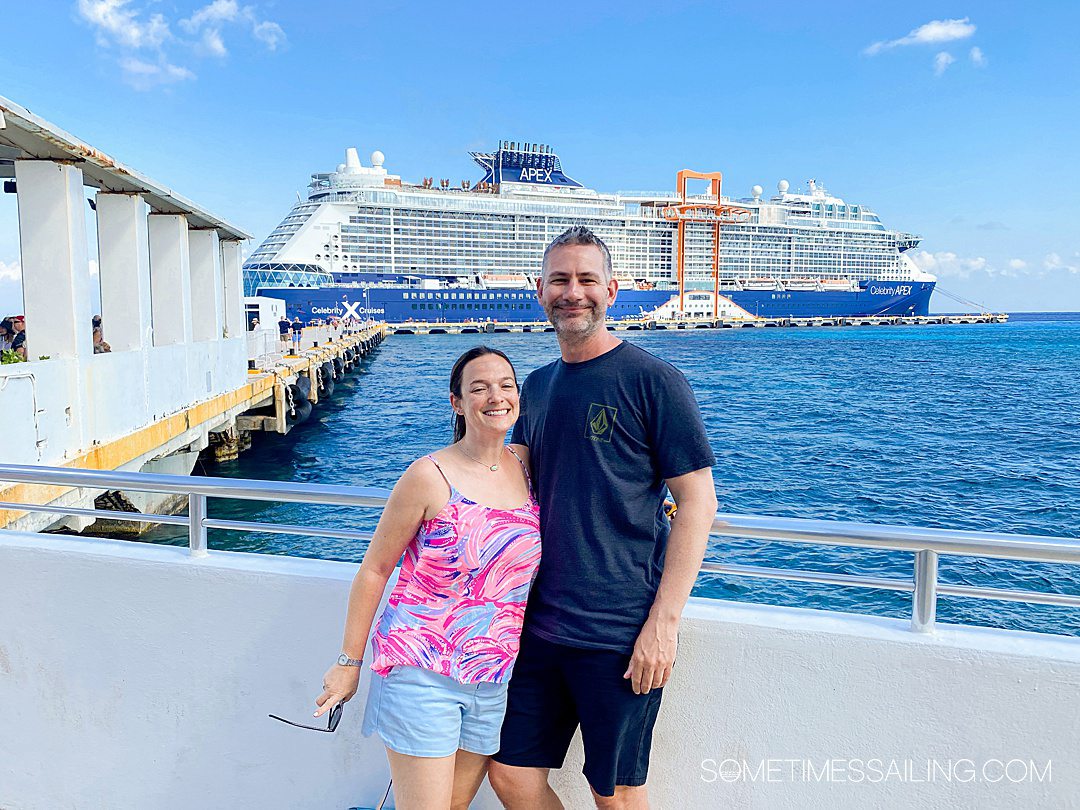
Disney Cruise Line
Who doesn’t love a Disney cruise, especially when you can sail to Bermuda, the Bahamas, or the Caribbean with all your favorite characters? But even if the characters don’t pique your interest, sailing as adults, only, is always fun with Disney. We’ve cruised on DCL without kids many times!
Castaway Cay, Disney's private island, is an incredibly popular destination that only Disney Cruise Line sails to.
Most Disney Cruises in the United States set sail from the East Coast, with the most popular ports being Port Canaveral and Miami. However, there is often a west coast cruise itinerary each year, like from San Diego.
Holland America Line
The majority of Holland America Line (HAL) closed loop cruises leave Fort Lauderdale and head to the Caribbean. But if you’re looking for an incredible Alaskan experience, head out west to Seattle and catch a trip to The Last Frontier with HAL.
Royal Caribbean
An incredibly popular cruise line, Royal Caribbean departs from 14 ports across the US. The most popular closed-loop itineraries leave from Port Canaveral and Miami, where they sail to the Caribbean and the Bahamas.
People love to visit Coco Cay, Royal Caribbean’s private island.
Norwegian Cruise Line
Despite its name, many cruises with Norwegian actually depart from the US. Amongst their popular itineraries is a Hawaiian closed-loop cruise from Honolulu, that tours around the Hawaiian Islands.
To visit the Bahamas or the Caribbean with Norwegian Cruise Line, choose the Port of Miami as the departure port.
Carnival Cruises
Miami, Galveston, Tampa, and Port Canaveral are the port of call where most closed-loop Carnival Cruises sail from. The top itineraries for all three ports will lead you to the incredible island nations of the Caribbean.
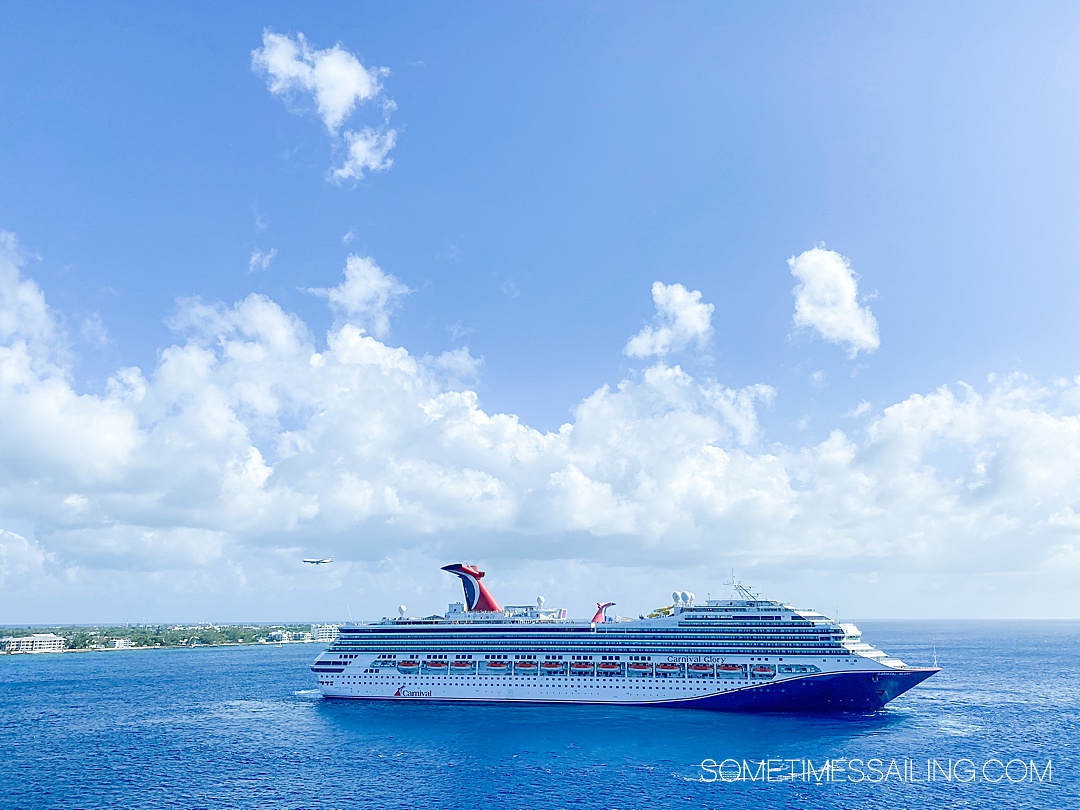
MSC Cruises
Dip your toes in Caribbean sand when you set sail from Port Canaveral or the Port of Miami. MSC Cruises offers hundreds of closed loop cruises each year.
Margaritaville at Sea
If you want a very short, low-cost cruise option that sails from the Port of Palm Beach, look into Margaritaville at Sea .
Closed-Loop Cruises in Popular European Cities
The United States isn’t the only region that offers closed loop cruises. Numerous cities in Europe also have such itineraries, although they aren’t always referred to as a closed loop cruise in marketing material.
Rather, you’ll see terms like “return trip cruise” or “two-way cruises.” Check each itinerary very closely.
However, it’s worth noting that while these cruises are technically closed-loop, because they start and end in the same port of call as our Emerald Cruises did in Amsterdam in The Netherlands, you need a passport to sail in Europe or Asia, for example, if you’re a United States citizen traveling abroad. You’ll also need a passport to fly there at an international airport.
One of the closed itineraries growing in popularity in Europe is a cruise to Iceland. Departing and ending at Rotterdam, in The Netherlands, you’ll get to explore this true wonder of the world. Cruises to Iceland also commonly include a port of call in Ireland as well.
The port of Civitavecchia in Rome, Italy, also offers a number of return trip cruises. These itineraries include stops in Greece, Turkey, and Italy. Or you can sail in a loop from the port of Ravenna in Venice, Italy, to see cities in Italy, Croatia, and Greece.
MSC offers popular cruises in the Mediterranean with return trips from Marseille, France . On these journeys, you will stop in places such as Genoa, Palermo, Ibiza, Valencia, Barcelona, and Naples.
Closed-Loop Cruises FAQs
What are the advantages of a closed loop cruise.
There are many, especially if you don’t have a passport!

What are the Disadvantages of a Closed Loop Cruise?
The main disadvantage is that fewer ports of call are available to you. Along with this, depending on your taste and travel preferences, your experience diving into different cultures and historical sites is lessened if you can only explore closed-loop cruise options.
How Do I Know If My Cruise Is Closed-Loop?
Two main things indicate if your cruise is closed loop and you won’t need a passport (but don’t forget – you need other valid identification):
- For Americans looking to travel without a passport, the first piece of information to note when investigating whether or not a cruise is closed-loop is if it departs from and arrives back at the same US port.
In order for it to be considered a closed-loop cruise that you don’t need a passport for the ship must leave and return to the same exact American port.
- The second criterion to check for is: Are all ports of call on the itinerary within the Western hemisphere?
Today, the majority of cruises that are closed-loop and you don’t need a passport for as a US citizen are within the Western Hemisphere only.
The idea of a closed-loop cruise originated with the creation of the Western Hemisphere Travel Initiative (WHTI) .
The objective of WHTI was to enhance and fortify American border security after 9/11 in 2001. However, there was also the added objective of streamlining and improving entry procedures into the United States. Several aspects of the initiative also deal with easing entry for residents of Bermuda, Canada, and Mexico.
Can You Leave the Ship on a Closed-Loop Cruise Without a Passport?
The answer is yes and no. It depends on the port of call.
It’s important to check the itinerary for your trip because there are a few places, even on a closed-loop cruise, that do require a passport to disembark. This is particularly common in the Caribbean in nations including Guadeloupe, the island of Martinique, St. Barts, Barbados, and others.
Below is a list of Caribbean nations you can travel to without a passport on a closed-loop cruise (meaning you can disembark the ship if your cruise ship stops there and you do not have a passport):
- Antigua and Barbuda
- British Virgin Islands
- Cayman Islands
- Dominican Republic
- Netherlands Antilles
- St. Kitts and Nevis
- St. Vincent and the Grenadines
- Turks and Caicos
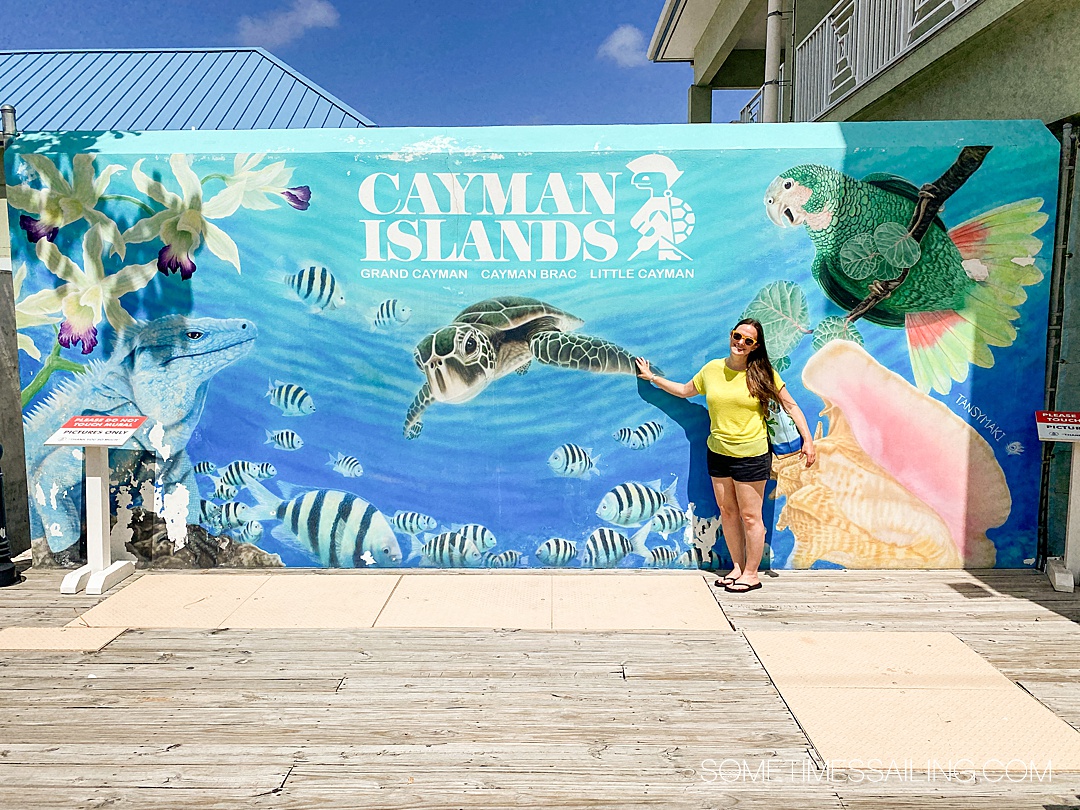
If you travel to any of these countries without a passport, however, it’s a good idea to take your valid forms of ID with you when you walk around the port in case you encounter any problems.
Precautions to Keep in Mind Traveling Outside the United States Without a Passport
Keep a few things to keep in mind if you travel on a closed-loop cruise without a passport.
Imagine, for instance, that something goes awry, and you need to fly back to the United States from a foreign country for a medical emergency. In this situation and in the case of an emergency, you will need a passport in order to travel through an international airport and board an airplane traveling internationally.
Additionally, without a U.S. passport, getting home or catching up with the trip could be challenging if you miss the ship in one of the ports.
An Enhanced Driver's License (EDL) allows you to re-enter the United States from Canada, Mexico, and the Caribbean. However, an EDL is only accepted at land and sea border crossings, not for air travel.
A closed loop cruise is a wonderful sea travel option for United States residents and citizens who want a vacation in multiple cities without needing a passport. (It’s an especially good option if you’re waiting for your new passport to arrive and you’re aching to go on a cruise, asap!)
However, there are things to be aware of when you’re looking into going on a closed-loop cruise from the United States. With the important information we have provided here, you’ll be an informed traveler who can make the best decision for your’s and your family’s next cruise.

Interested in cruises? Read this next:
- River Cruise vs Ocean Cruise: What’s the Difference?
- How to Decide the Best Cruises to Book
- Guide to Mississippi River Cruises: Discover The Heart of America

Similar Posts
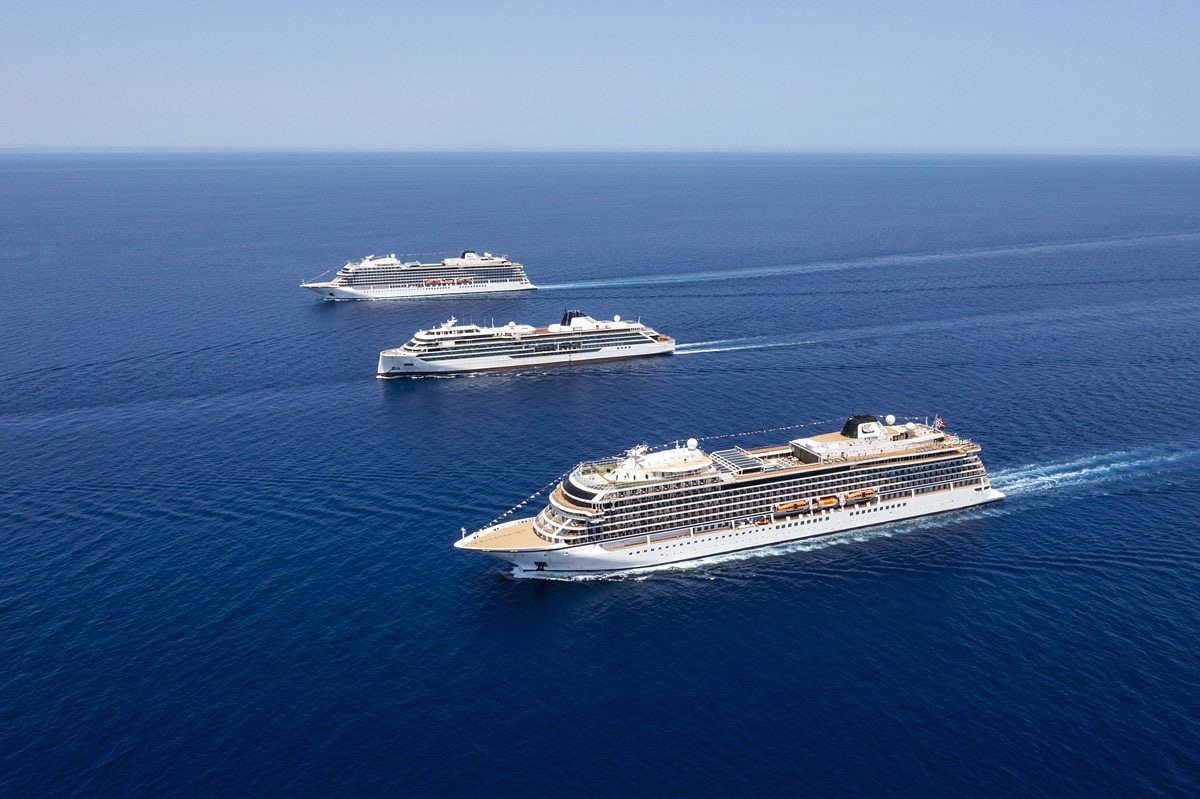
United States Cruise Ports Map and Information
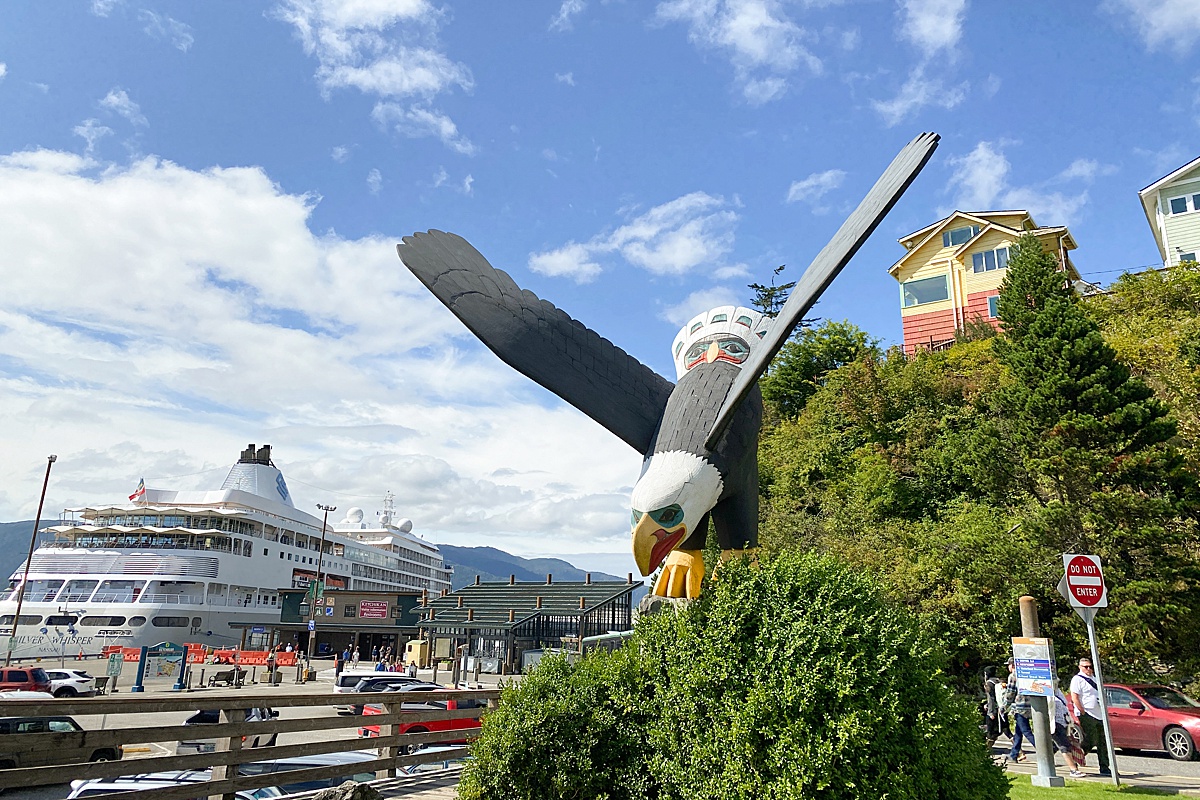
Alaska Luxury Cruises That Elevate Your Journey In the Last Frontier
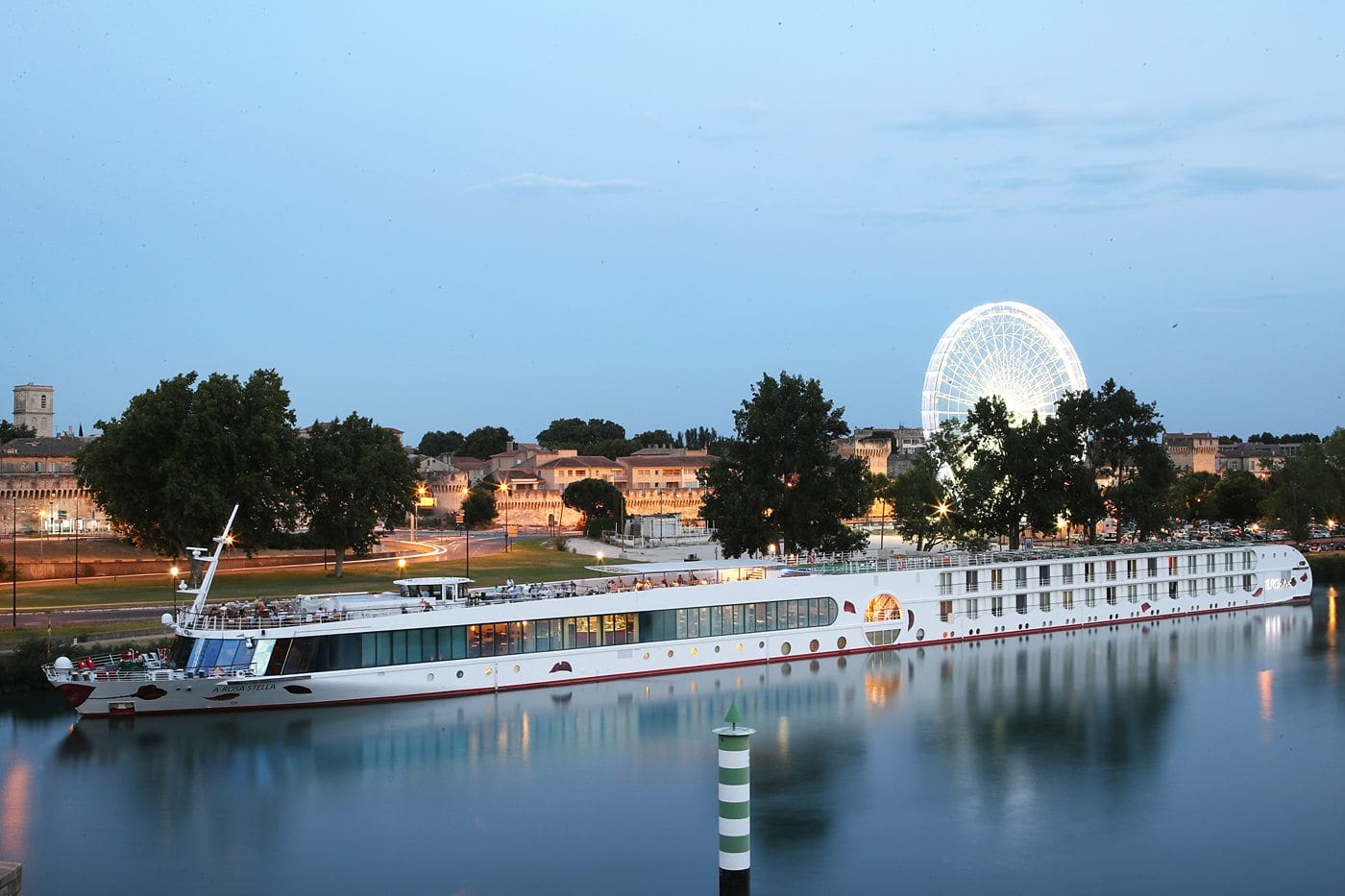
Essential Guide to Over 110 Cruise Ship Terms (and Commonly Used Nautical and Boating Jargon)
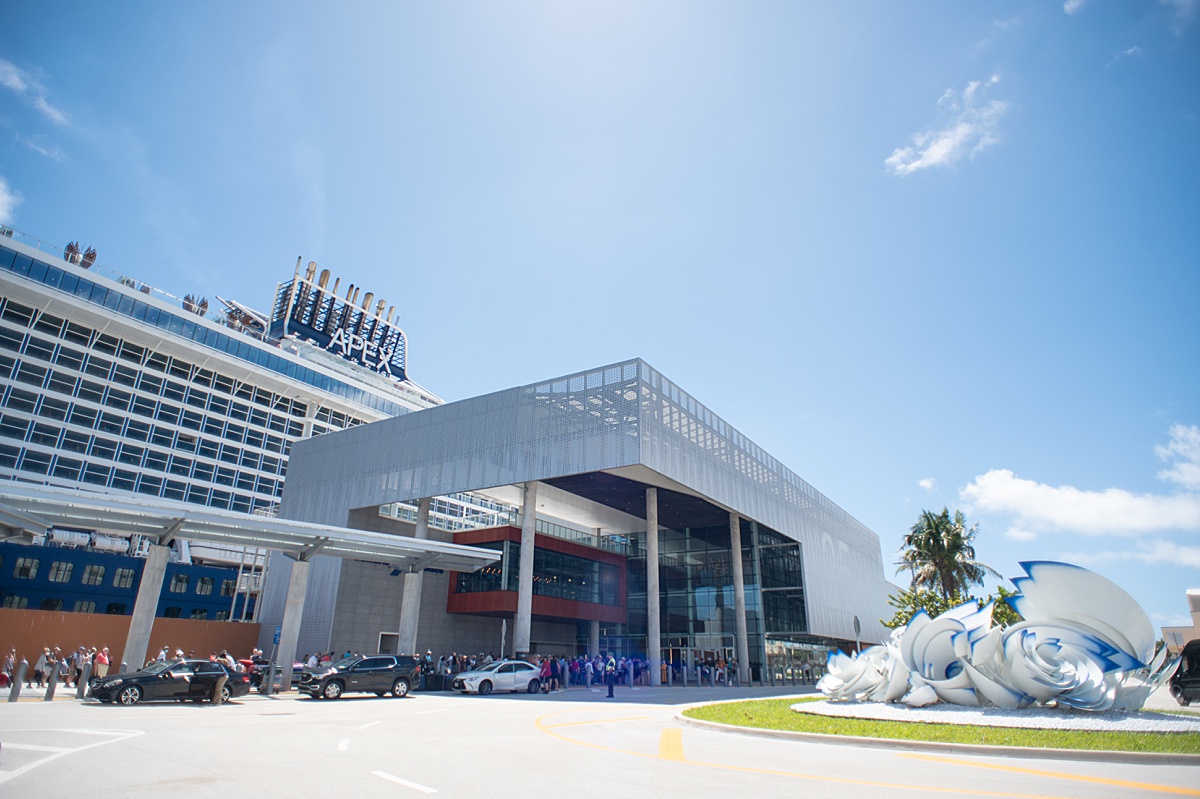
Complete Guide to Fort Lauderdale Cruise Port (Port Everglades)
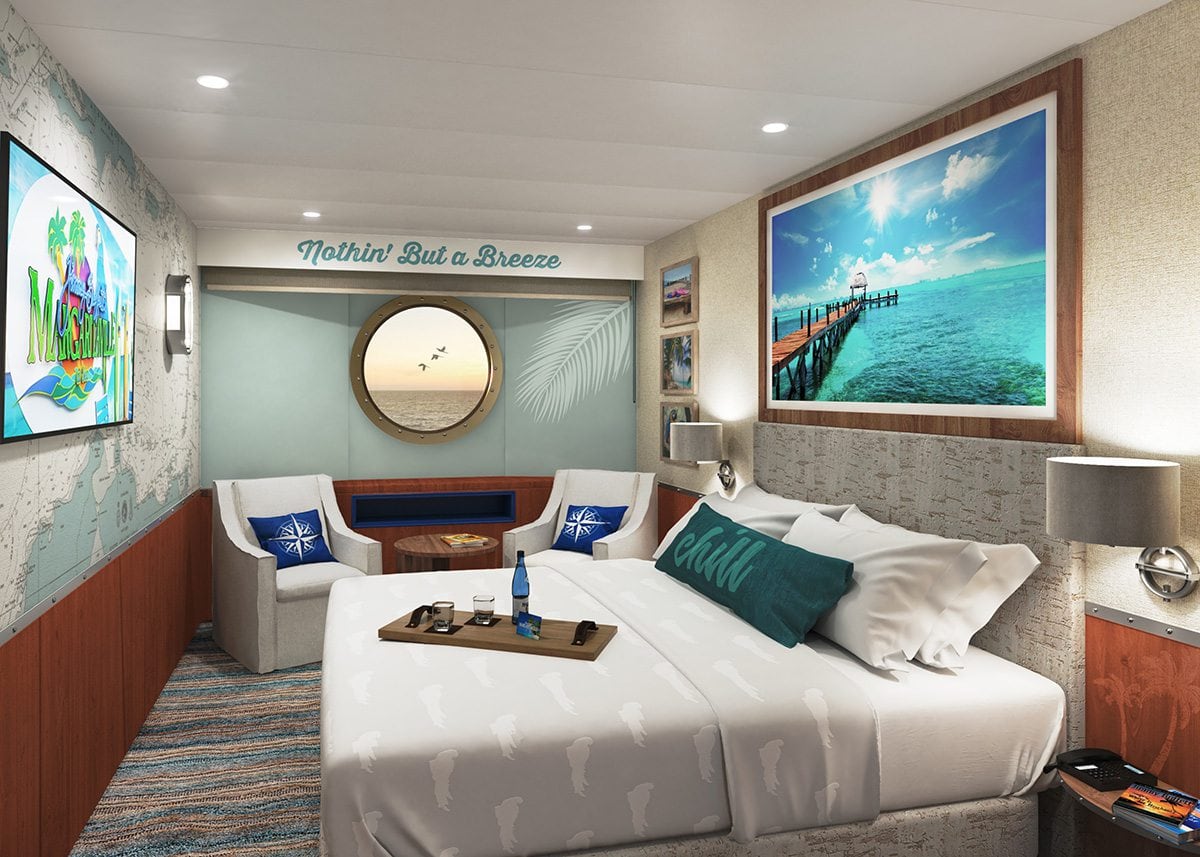
Margaritaville Cruise: Jimmy Buffett’s Margaritaville at Sea
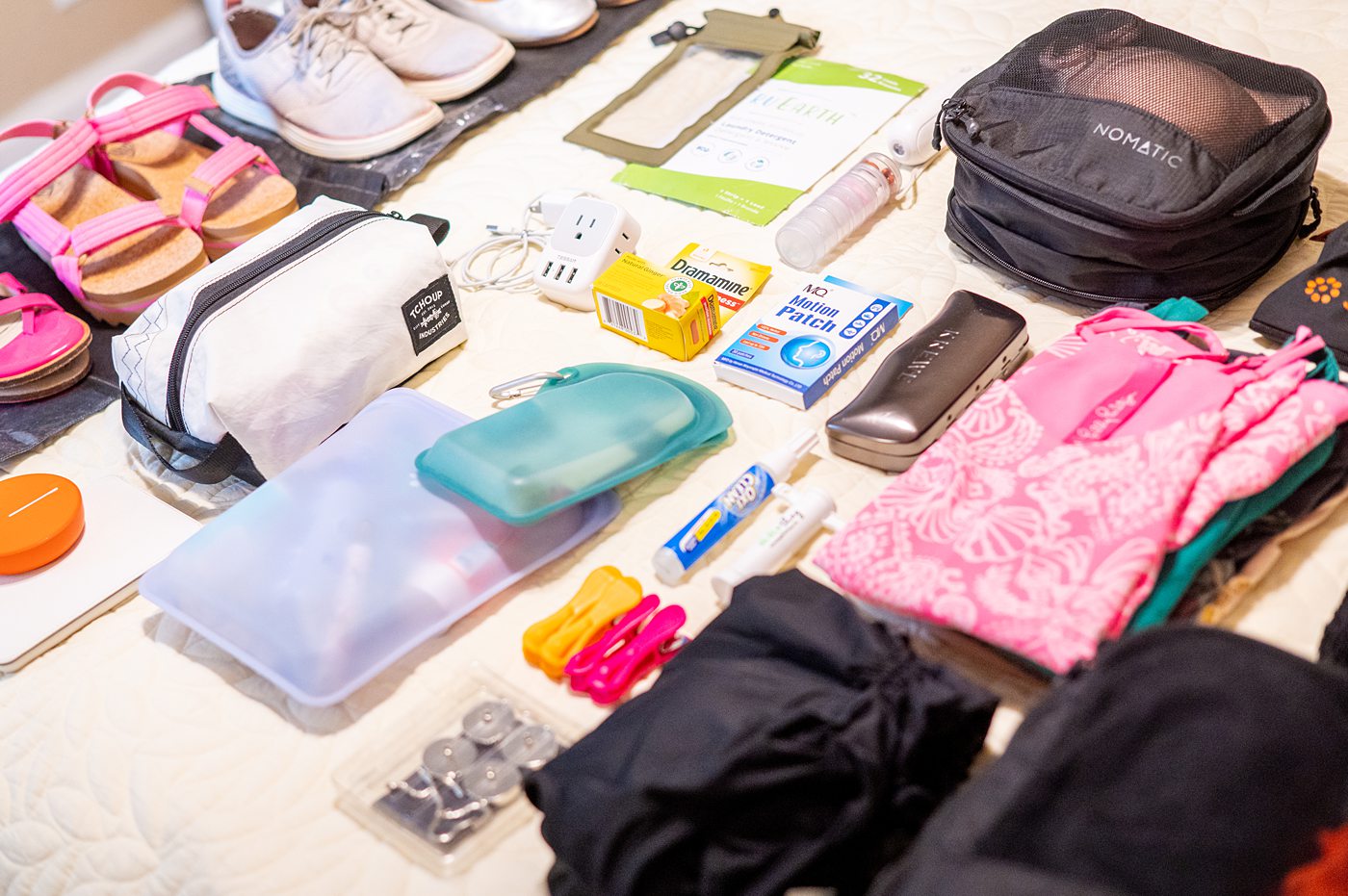
Top Amazon Cruise Essentials for Your Packing List (2024)
Where can I find information concerning actual open jaw/repositioning cruises please? All I saw here was a definition of what they are…………..
Hi John – there are an innumerable amount of cruises available and they’re constantly changing in availability and price, so it’s hard for us to list them out in an article like this. That is why, instead, we help people understand what they are. Then, you have the tools to research open-jaw or closed-jaw cruises on your own on any of the dozens and dozens of cruise line websites. If you go to any website for a cruise and search by port, you can find the itinerary. If it starts and ends in different ports, it’s considered an open-jaw cruise. Best of luck! – Mikkel
Leave a Reply Cancel reply
Your email address will not be published. Required fields are marked *
Save my name, email, and website in this browser for the next time I comment.

Closed Loop vs Open Jaw Cruises: How Passport Requirements Differ
Cruise Admin is a team of experienced writers passionate about cruising. They provide comprehensive and honest information to fellow cruise enthusiasts, sharing insider tips and practical advice to help readers plan and enjoy their cruise vacations to the fullest. When not writing, the Cruise Admin team loves exploring new destinations and seeking out unique cultural experiences.

Are you planning a cruise vacation? If so, you might have come across the terms closed-loop and open-jaw cruises. These terms may sound confusing, but they refer to the routes a cruise ship takes. Closed-loop and open-jaw cruises have different passport requirements.
In this article, we’ll explain the differences between closed loop vs open jaw cruises and the passport requirements for each.
Table of Contents
Overview of closed-loop and open-jaw cruises.
Before we dive into the passport requirements, let’s first define closed-loop and open-jaw cruises. A closed-loop cruise is a round-trip cruise that starts and ends at the same U.S. port. Open-jaw cruises, on the other hand, are itineraries that begin and end at different ports, either within the same country or in different countries.
Passport Requirements for Closed-Loop Cruises
If you’re a U.S. citizen taking a closed-loop cruise, you can use a government-issued photo ID card and a birth certificate, a Consular Report of Birth Abroad, or a Naturalization Certificate as proof of citizenship. But if you have a passport, it’s always best to use it.
Explanation of Passport Requirements
A passport is the most accepted and reliable form of identification when traveling internationally. It’s a document that verifies your identity and citizenship and is issued by the government. When traveling on a closed-loop cruise, you’ll need a passport to re-enter the United States after your trip.
Different Passport Regulations for Closed-Loop Cruises
If you’re taking a closed-loop cruise that includes a port of call in another country, you’ll need a passport book, not a passport card. A passport card is a wallet-sized card that is only valid for land and sea travel between the U.S. and Canada, Mexico, the Caribbean, and Bermuda.
Entry and Exit Requirements for Closed-Loop Cruises
If you’re a U.S. citizen and you’re taking a closed-loop cruise that starts and ends at the same U.S. port, you won’t need to go through customs and immigration when you return to the United States. You’ll only need to show your passport or other travel documents to the U.S. Customs and Border Protection (CBP) officials at the port of entry.
Passport Requirements for Open-Jaw Cruises
If you’re taking an open-jaw cruise, you’ll need a passport book, regardless of whether the ports of call are in the same country or different countries.
As we mentioned earlier, a passport book is the most reliable form of identification when traveling internationally. It’s also necessary for re-entry into the United States after your trip.
Different Passport Regulations for Open-Jaw Cruises
If you’re taking an open-jaw cruise that includes ports of call in multiple countries, you may need a visa or other travel documentation, depending on the countries you’re visiting. Always check with the embassy or consulate of each country you’re visiting to determine the specific requirements.
Entry and Exit Requirements for Open-Jaw Cruises
When you’re taking an open-jaw cruise, you’ll need to go through customs and immigration when you return to the United States. You’ll need to present your passport and any other required travel documents to the CBP officials at the port of entry.
International Travel and U.S. Customs and Border Protection
Before we move on to the visa requirements, it’s important to understand the role of the U.S. Customs and Border Protection (CBP) when it comes to international travel. CBP is responsible for securing the U.S. borders and facilitating legitimate travel and trade. When you’re returning from your cruise, CBP officials will ask to see your passport and any other required travel documents. They’ll also conduct a security screening to ensure that you’re not carrying any prohibited items.
Visa Requirements for Closed-Loop and Open-Jaw Cruises
In addition to a passport, you may need a visa or other travel documentation, depending on the countries you’re visiting on your cruise.
Countries That Require Visas
Some countries require a visa for U.S. citizens to enter. The visa application process can be time-consuming, so it’s essential to research the visa requirements before booking your cruise.
Process for Obtaining a Visa
The process for obtaining a visa varies depending on the country. Some countries allow you to apply for a visa online, while others require you to visit the embassy or consulate in person.
Visa Requirements for Closed-Loop Cruises
If you’re taking a closed-loop cruise that includes a port of call in another country, you may need a visa. Always check with the embassy or consulate of the country you’re visiting to determine the specific requirements.
Visa Requirements for Open-Jaw Cruises
If you’re taking an open-jaw cruise that includes ports of call in multiple countries, you may need a visa for each country you’re visiting. Always check with the embassy or consulate of each country to determine the specific requirements.
Tips for Planning Your Cruise
Now that you know the passport and visa requirements for closed-loop and open-jaw cruises, it’s time to start planning your trip. Here are some tips to keep in mind:
- Research your cruise line’s requirements: Each cruise line has its own set of requirements for travel documentation. Make sure you know what’s required before you book your trip.
- Check the entry and exit requirements for your destinations: Before you leave, research the visa and passport requirements for each port of call.
- Apply for your passport and visa well in advance: It’s important to apply for your passport and visa at least several months before your trip to avoid any delays or complications.
In summary, closed-loop and open-jaw cruises have different passport requirements. If you’re taking a closed-loop cruise, you can use a government-issued photo ID card and a birth certificate, a Consular Report of Birth Abroad, or a Naturalization Certificate as proof of citizenship, but a passport is always best. If you’re taking an open-jaw cruise, you’ll need a passport book, regardless of whether the ports of call are in the same country or different countries. Always remember to research the visa and passport requirements for each port of call and apply for your travel documents well in advance. By following these tips and planning ahead, you can ensure a stress-free and enjoyable cruise vacation.
Passport Requirements for Cruise Travel: What You Need to Know
Countries That Require a Passport for Cruise Travel
Receive the latest articles in your inbox
Insert your email signup form below
© 2024 Cruisability

Here's When You Need (and Don't Need) a Passport to Cruise
T o determine whether or not you need a passport to cruise, you first need to figure out if the itinerary is closed-loop or open-loop (also known as open-jaw).
Closed-loop cruise: A closed-loop cruise typically doesn't require a passport since it begins and ends in the same U.S. port (though there are some exceptions to this rule).
Example: Royal Caribbean International 's seven-night Western Caribbean & Perfect Day cruise stops in several countries – the Bahamas, Jamaica, Haiti and Grand Cayman – but the itinerary is considered closed-loop because it starts and ends in Fort Lauderdale, Florida.
Open-loop cruise: An open-loop cruise begins in one U.S. port and ends in a different U.S. port.
Example: Carnival Cruise Line 's 16-day Panama Canal from Seattle itinerary is not considered closed-loop because it departs from Seattle and completes its journey in New Orleans.
All of the above regulations have been determined by the Western Hemisphere Travel Initiative: a plan by the departments of State and Homeland Security that determines which documents are acceptable for proving identity and citizenship when entering the United States.
Where to cruise without a passport
There are several destinations where you can cruise without a passport on a closed-loop sailing. They include the following:
- The Bahamas
When looking at cruises to these locations, be mindful of the home ports. The Bahamas, Mexico, Bermuda, the Caribbean and Canada are all foreign ports, which means they only qualify for the passport exception if they are a stop along your cruise itinerary . If the cruise originates in any of these countries, it is likely you will need a passport.
Since Alaska, Hawaii and New England are all U.S. destinations, any closed-loop routes departing from these locations will not require a passport. However, keep in mind that it can be hard to find closed-loop cruises originating in Hawaii or Alaska.
To find closed-loop itineraries for a Hawaiian voyage or Alaskan cruise , try searching for sailings departing from major cities on the West Coast, like Seattle or Los Angeles . By contrast, quite a few closed-loop cruises leave from New England ports, but they are often marketed as Canadian cruises.
Raw HTML : Tips on Trips and Expert Picks
When you need a passport for closed-loop cruises
Some cruise itineraries include foreign ports that require a passport for disembarkation. This is most commonly an issue for travelers on a closed-loop Caribbean cruise. Barbados , Guadeloupe , Haiti, Martinique , St. Barts , and Trinidad and Tobago all require U.S. citizens to present a valid passport to disembark and enter the country, despite WHTI regulations not requiring a passport for these destinations. Labadee, Royal Caribbean's private island , is an exception and does not require a passport despite its location in Haiti.
If your itinerary includes a country requiring a U.S. passport, your cruise line will require you to have the passport at check-in. Note that your passport must not expire within six months of your arrival in a foreign country or else it won't be considered valid for international travel.
Read: The Easiest Way to Renew Your Passport
Acceptable forms of ID
All travelers – U.S. citizens and foreign nationals alike – must present documents that show identity and citizenship when entering the United States. A U.S. passport can show both. If you don't have one or don't want to bring one, be aware that you may need to present more than one document.
U.S. citizens 16 and older
If you're a U.S. citizen age 16 or older sailing on a closed-loop cruise without your passport, you will need a government-issued photo ID like a driver's license. In addition, you must present a document that proves your U.S. citizenship. These include:
- Passport card
- State-issued enhanced driver's license (EDL)
- Government-issued birth certificate
- Trusted Traveler Program card (NEXUS, SENTRI or FAST)
- American Indian Card (Form I-872) or Enhanced Tribal ID Card
The Trusted Traveler Programs are risk-based programs to facilitate the entry of travelers who have been vetted and preapproved. Most of these programs will provide you with a machine-readable card that allows you to pass through border checkpoints quickly. Keep in mind, some of these IDs are only available to travelers 16 and older.
Read: TSA Precheck vs. Global Entry
U.S. citizens younger than 16
U.S. citizens younger than 16 are only required to present proof of citizenship, such as one of the following documents:
- Original, notarized or certified copy of their government-issued birth certificate
- Consular Report of Birth Abroad issued by U.S. Department of State
- Certificate of Naturalization issued by U.S. Citizenship and Immigration Services
Read: How to Get a Passport for Kids
Non-U.S. citizens
If you are a lawful permanent resident (or LPR) of the United States, you are required to present a permanent resident card or other valid evidence of permanent residence status.
Non-U.S. citizens, with the exception of Canadians and Mexicans, are not subject to passport exceptions, so a valid passport will need to be provided. Canadian citizens can present a valid passport, Enhanced Driver's License or Trusted Traveler Program card. Mexican citizens must present a passport with a visa or a Border Crossing Card.
Unacceptable forms of ID
While most common forms of identification are accepted, there are a few exceptions. U.S. military identification cards and U.S. Merchant Mariner documents are valid forms of identification, but only when traveling on official orders or in conjunction with official maritime business, so it is unlikely they will be accepted when traveling on a cruise.
Here are some other documents that will not be accepted as proof of citizenship:
- Voter registration cards
- Social Security cards
- Baptismal papers
- Hospital certificates of birth (for anyone older than a newborn)
It is important to note that many of the permitted forms of identification, such as a passport card or EDL, are only accepted at land and sea border crossings. Unforeseen circumstances, such as a medical air evacuation, may cause you to return to the U.S. by air travel. In this case, these documents won't be accepted when you try to reenter at the border crossing.
To avoid extra delays in your return to the U.S. following unforeseen travel complications, the Department of State recommends that everyone taking a cruise from the United States carry a valid passport book in case of emergency.
Why Trust U.S. News Travel
Erin Vasta has traveled extensively to international destinations, gaining a deep knowledge of travel regulations in the process. Her expertise in this area has saved her family and friends from unnecessary travel delays and ensured stress-free trips through border security in nearly 15 countries. To write this article, Vasta used her international travel experience and research skills.
You might also be interested in:
- The Top Passport Holders
- Cruise Packing List: Essentials to Bring
- Safe at Sea: The Best Cruise Insurance
Copyright 2023 U.S. News & World Report
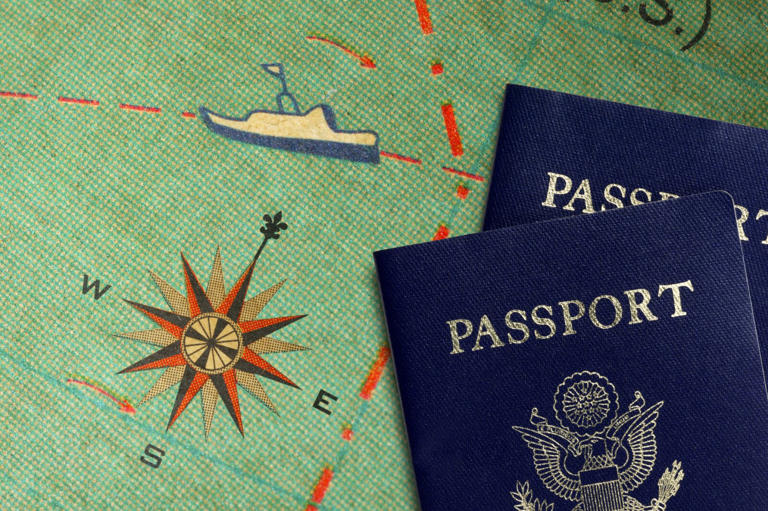
Celebrity Blog
- Choosing a Cruise
- Planning / Booking A Cruise
- Preparing For Your Cruise
- Special Occasions
- What To Expect On A Cruise
- Australia, New Zealand & the Pacific
- Central America
- East Coast & Bermuda
- Mexican Riviera
- South America & Antarctica
- Destinations
Closed-Loop Cruises: Everything You Need to Know
By Sue Bryant
Last updated: November 6th, 2023
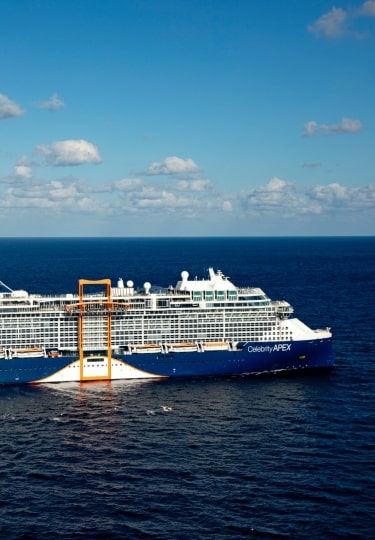
- Find a Cruise
Have you ever found yourself with a few days to spare and an overwhelming desire to escape to the balmy Caribbean, or on an Alaskan adventure, then realized that you don’t have a passport, or your passport has expired? As a U.S. citizen, you can take advantage of the convenience of what’s called a closed-loop cruise—with no passport required.
What is a closed-loop cruise?
A closed-loop cruise is a cruise that departs and ends in the same U.S. port, for example, Fort Lauderdale to Fort Lauderdale, or round-trip to Alaska from Seattle.

Prospect Point in Stanley Park, Vancouver
These cruises have to meet certain criteria to qualify. Every voyage on a ship that’s not U.S. flagged, departing from and returning to a U.S. port must, according to maritime law, visit one foreign port of call. This is why you’ll find Alaska cruises stopping in Vancouver, or Western Caribbean cruises calling in at Cancun.
To qualify as closed-loop cruises, the places these itineraries can include must be contiguous territories of the United States. That includes Mexico and Canada, because both share land borders with the U.S., and several of the islands of the Caribbean .
Do I need a passport for a closed-loop cruise?

Key West, Florida
In most cases, you don’t need a passport for a closed-loop cruise. This is one of the reasons why these itineraries are so popular. You can, of course, use your passport or passport card as an ID if you have one. But in the case of closed-loop cruises, U.S. citizens are allowed to enter or depart the country with proof of citizenship.
According to U.S. Customs & Border Protection, this includes an Enhanced Driver’s License, which is a state-issued driver’s license that provides proof of identity and U.S. citizenship; a government-issued birth certificate (issued by the Vital Records Department in the state where the person was born) or passport; and if 16 or older, a government-issued driver’s license or picture ID denoting photo, name, and date of birth.
The Enhanced Driver’s License allows you to re-enter the U.S. from Canada, Mexico, and the Caribbean and is valid at land and sea border crossing but not airports.
Different documentation is acceptable for minors under 16, including an original, notarized, or certified copy of their birth certificate, a Consular Report of Birth Abroad, or a Certificate of Naturalization. Voter registration cards and Social Security cards are not considered proof of citizenship.
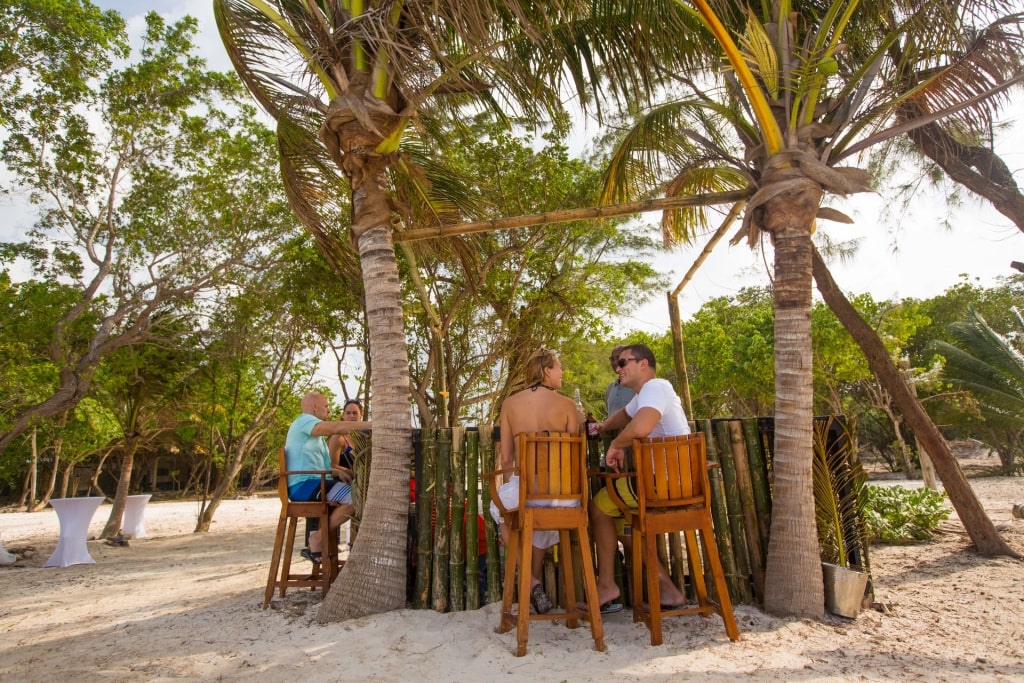
Falmouth, Jamaica
There are different rules still if you’re a Lawful Permanent Resident (LPR) of the U.S. While the U.S. government does not require you to have a passport, destinations on the itinerary may have different rules, so it’s always advisable to check. If you are an LPR, you’ll need your I-551, or Green Card, to re-enter the U.S. And if you’re not a U.S. citizen or a U.S. LPR, you’ll need a passport regardless of whether you’re on a closed-loop cruise or not.
If you do choose to take advantage of this opportunity to travel without a passport, there are a couple of warnings to bear in mind. Say, for example, something goes wrong and you have to return to the U.S. by air. In this case, you’d need a passport to board a flight.
Also, if you miss the ship in one of the ports, you’ll have to make your own way home or to catch up with the cruise, which could be difficult without a passport. If you book an excursion through Celebrity Cruises, that won’t happen, since the ship is guaranteed to wait for you.
What are some of the best closed-loop cruise itineraries?
Fort lauderdale to bahamas, mexico and grand cayman.
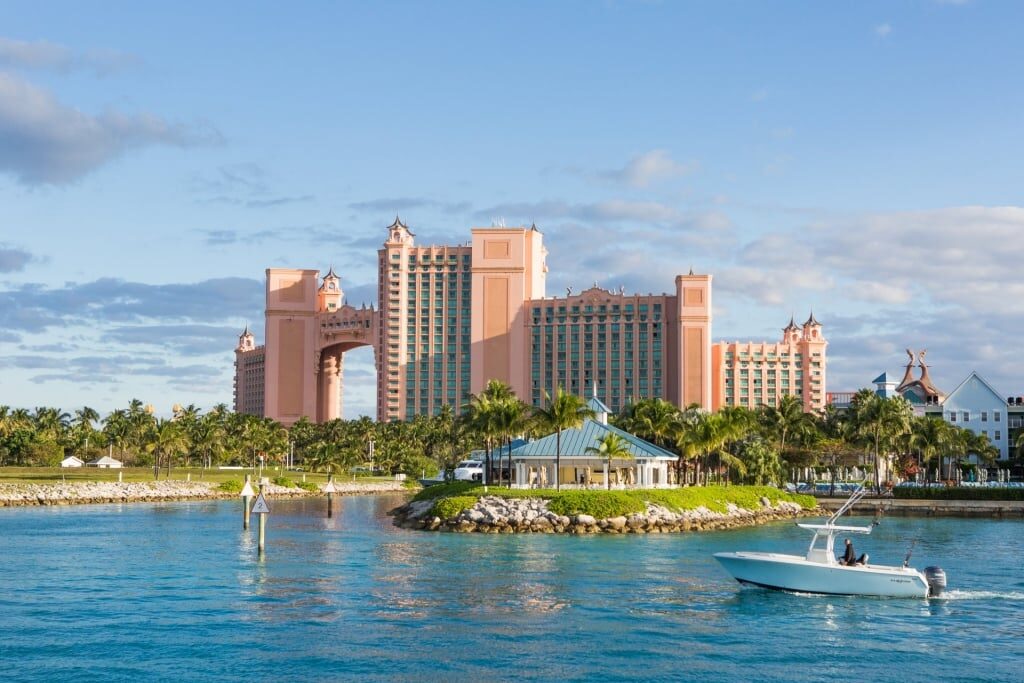
Atlantis Resort in Nassau, Bahamas
Cruise from Fort Lauderdale on the fabulous Celebrity Edge, one of the most innovative and impressive ships afloat, bound for the Bahamas and the warm, blue waters of the Caribbean. You’ll spend a day in colorful Nassau, on New Providence Island, with plenty of time to hit the powder-sand beaches, snorkel over dazzling reefs, shop for crafts in the Straw Market, or enjoy an adrenaline rush on one of the dramatic water slides at the glitzy Atlantis Resort.
After a day at sea to enjoy the ship and its magnificent Resort Deck, you’ll arrive at Puerto Costa Maya, Mexico . A vast array of choices beckons here, like relaxed tubing at the freshwater Bacalar Lagoon, where you’ll drift over cenote-fed water that’s an astonishing shade of aquamarine.
Or you could try rafting, sail-and-snorkel tours, and even a healing session with an authentic shaman. There’s Mayan history here, too, at the Chacchoben Ruins, a short drive from the port.
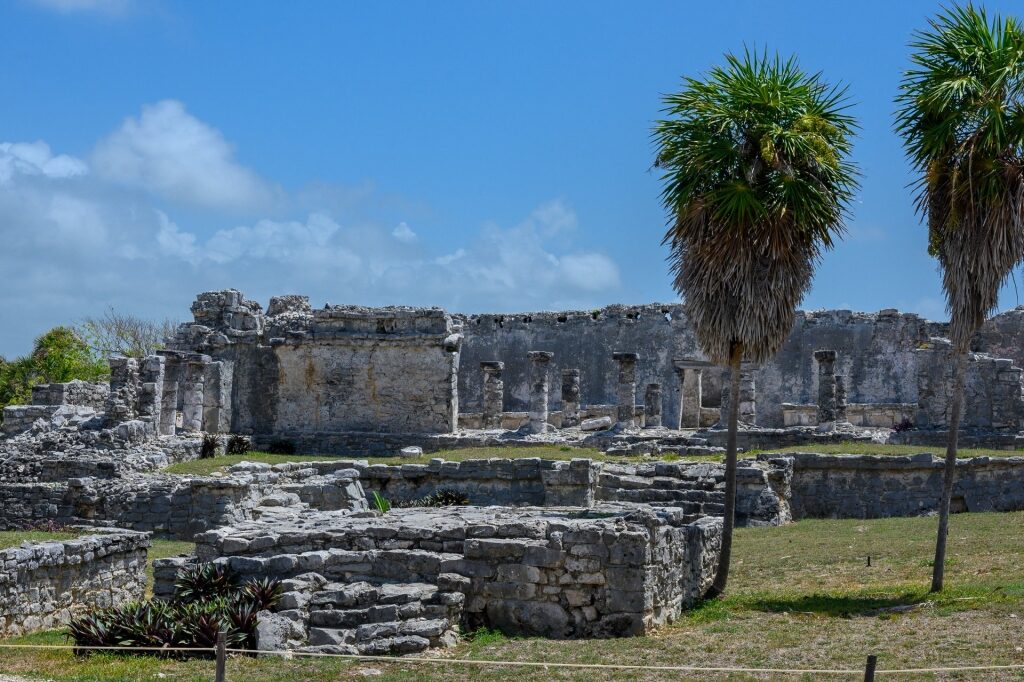
Watch: Discover Cozumel With Celebrity Cruises
From Cozumel , you could join an excursion to the magnificent Mayan ruins at Tulum set against a backdrop of the turquoise sea. Try a salsa and margarita-making masterclass, or paddle a glass-bottomed kayak over rainbow-colored reefs.
This seven-night cruise also calls at Grand Cayman , where you can experience dazzling white beaches, pristine reefs, and unusual wildlife encounters, like swimming among stingrays in the warm, shallow waters of Stingray City.
Browse Caribbean Cruises on Celebrity Edge
Seattle to Alaska, the Inside Passage, and Dawes Glacier
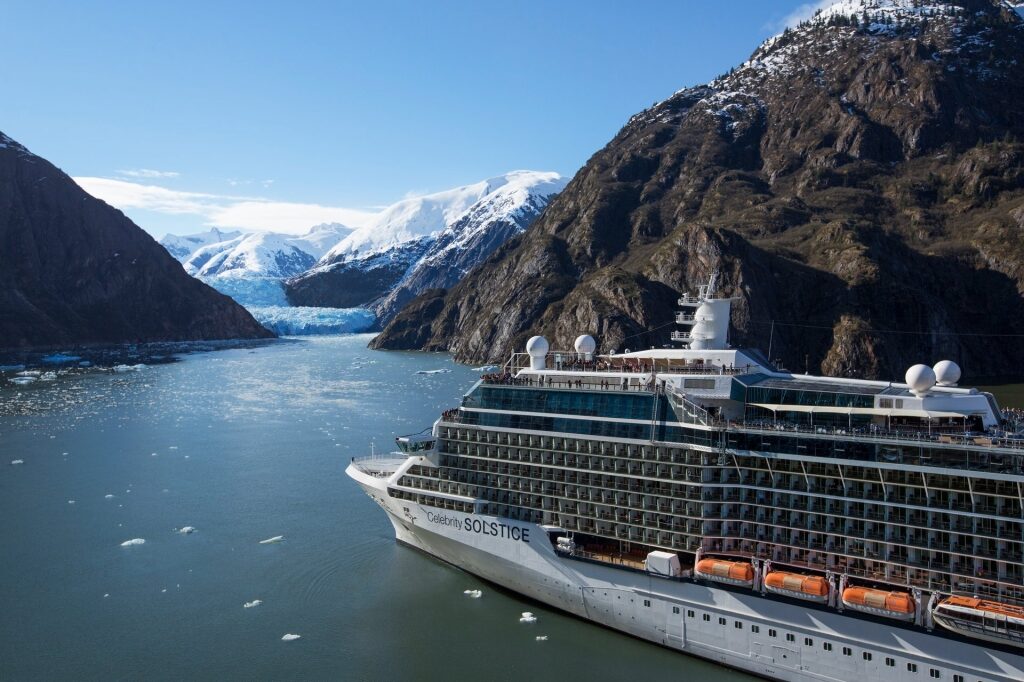
Celebrity Solstice
Spend seven nights exploring the wild beauty of Alaska on Celebrity Solstice , the perfect ship for such dazzling scenery, with its abundance of outside space and top-deck Lawn Club.
You’ll visit pretty Ketchikan, from where you could join a bear-spotting tour, try kayaking, join an expedition to fish for king crab, or just explore the colorful town. Next, there’s a full day slowly cruising the 30-mile Endicott Arm Fjord , past tumbling waterfalls and chunks of floating ice that have broken off the magnificent Dawes Glacier, a 600-foot tall wall of blue-white ice. The spectacle of this vast river of ice meeting the sea is a highlight of the day.

Mendenhall Lake in Juneau, Alaska
You’ll also visit Juneau , the perfect spot for whale-watching, hiking, and thrilling flightseeing trips over snow-covered mountains. In Skagway, you’ll have the chance to ride the spectacular White Pass and Yukon Route railroad, heading high over rugged passes, following the trail of hardy prospectors from the Gold Rush days.
As Celebrity Solstice heads back to Seattle, there’s a day on board to relax as the ship threads its way through the narrow channels of the Inside Passage , between forested islands and rock-strewn beaches, with great opportunities for spotting whales and bears from your vantage point on deck.
There’s also a call at historic Victoria on Canada’s Vancouver Island, where you can experience a pleasing blend of elegant, British colonial architecture, cool shops, and craft breweries before you return to Seattle.
Browse Alaska Cruises on Celebrity Solstice
Los Angeles to the Mexican Riviera
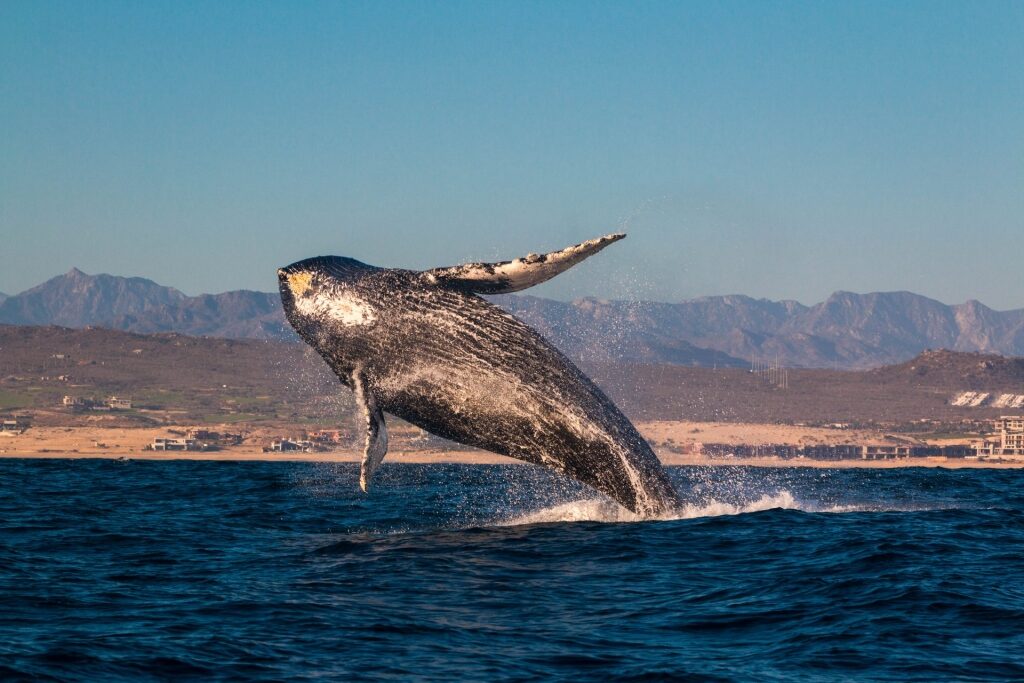
Watch: Discover the Mexican Riviera With Celebrity Cruises
Sail round-trip from Los Angeles to the glamorous Mexican Riviera on the recently revolutionized Celebrity Millennium. From buzzing Puerto Vallarta, you could join a whale-watching tour, browse the arty stores, or kick back at the beach to enjoy the soft sand and azure waters of the Pacific.
At Cabo San Lucas , there’s more whale-watching along the wild, rocky coast, or watersports ranging from kayaking to snorkeling. Explore the Art District and old adobe buildings in nearby San Jose del Cabo, or explore the Baja desert on a 4×4 off-road adventure.
Read: Where to Go Whale Watching in Mexico
From Ensenada, you could snorkel over underwater rock formations at Todos Santos island, or join a wine tasting tour to Calafia Valley, Mexico’s wine-growing region. Closer to port, join a walking tour of the cosmopolitan town to sample tequila and tacos .
Read: Best Things to Do in Ensenada
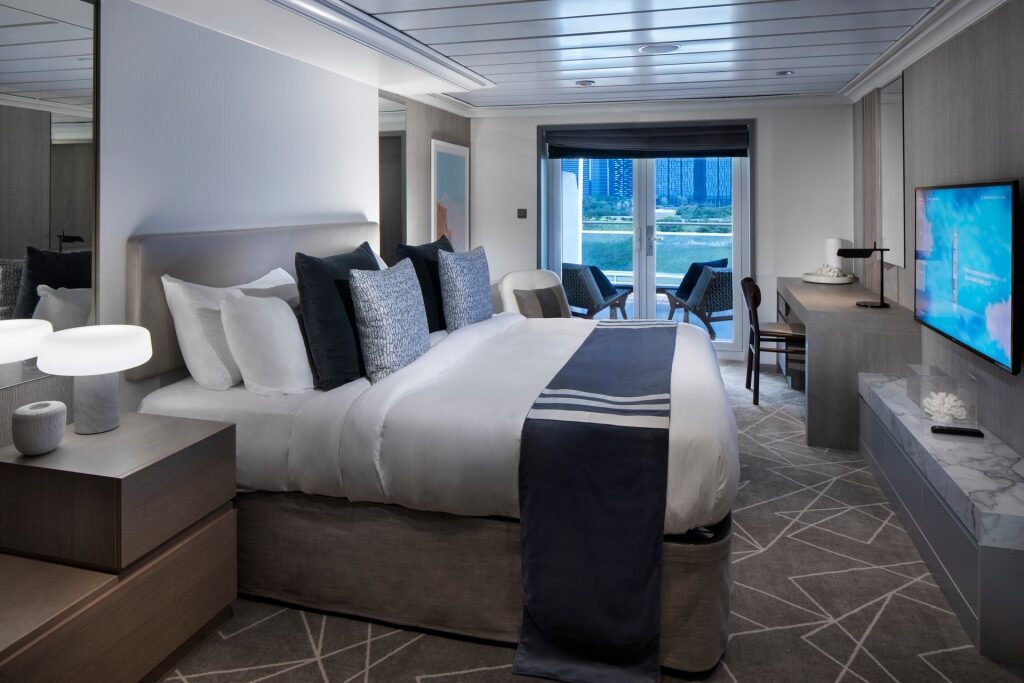
Celebrity Millennium Suite
You’ll have three full days at sea on this itinerary to soak up the Pacific sunshine and enjoy Celebrity Millennium . Why not upgrade to The Retreat for a true taste of luxury? You’ll enjoy a luxurious suite and dine in the beautiful, fine dining Luminae restaurant, exclusive to guests of this tranquil enclave.
Browse Mexican Riviera cruises on Celebrity Millennium
Fort Lauderdale to Key West, Belize, and Grand Cayman

Set sail from Fort Lauderdale on the brand new Celebrity Apex , the second in Celebrity Cruises’ award-winning Edge series. You’ll spend a day at quirky, colorful Key West, where you can try stand-up paddleboarding or join a cycling tour through the palm-lined streets of this happily eccentric place. Explore Ernest Hemingway’s former home, and don’t miss a chance to sample the island’s iconic key lime pie.
Tropical Belize is all about adventure, from cave tubing to ziplining high above the rainforest canopy. Mayan antiquities have been absorbed by the forest, making their setting even more dramatic. Visit mysterious Lamanai, one of Mesoamerica’s largest ceremonial sites, or join a tour to the ancient hilltop ruins of Xunantunich and the temple of El Castillo.
Read: Unforgettable Adventures in Belize
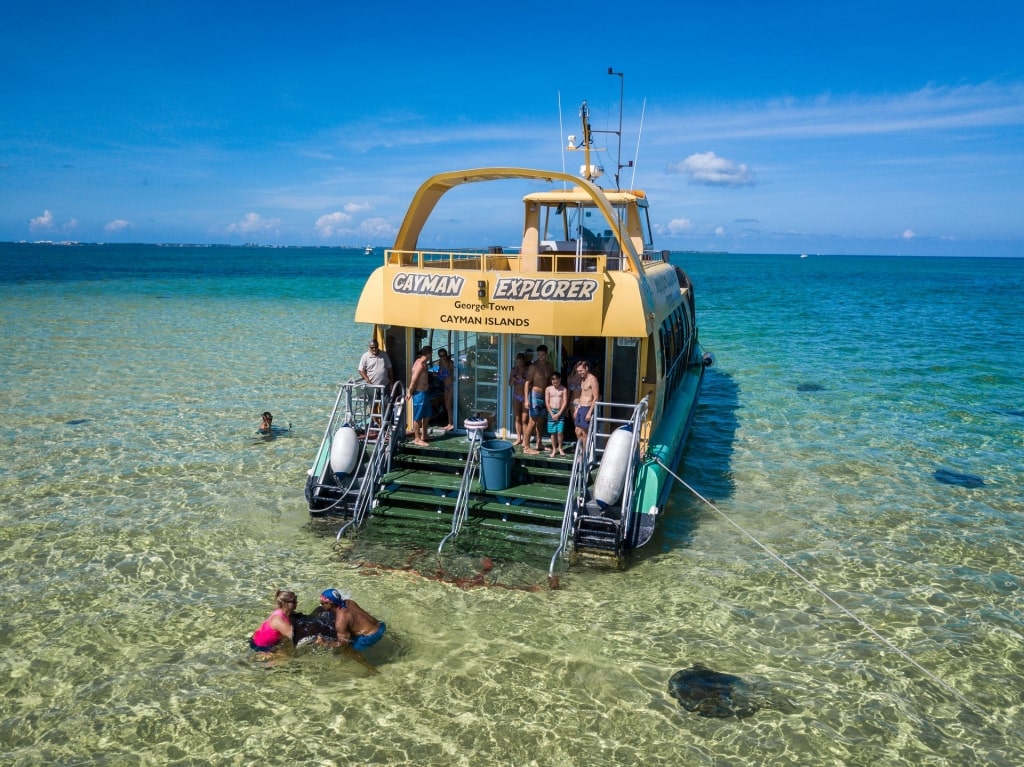
Stingray City in George Town, Grand Cayman
This cruise also visits the beach paradise of Cozumel , for all manner of watersports, shopping, and sizzling Mexican cuisine. There’s even a chance to join a taco-making class.
Celebrity Apex then sets a course east to the island of Grand Cayman, famed for its magnificent beaches and marine life, like the tame stingrays that congregate around the Stingray City sandbar waiting to be fed tidbits of squid.
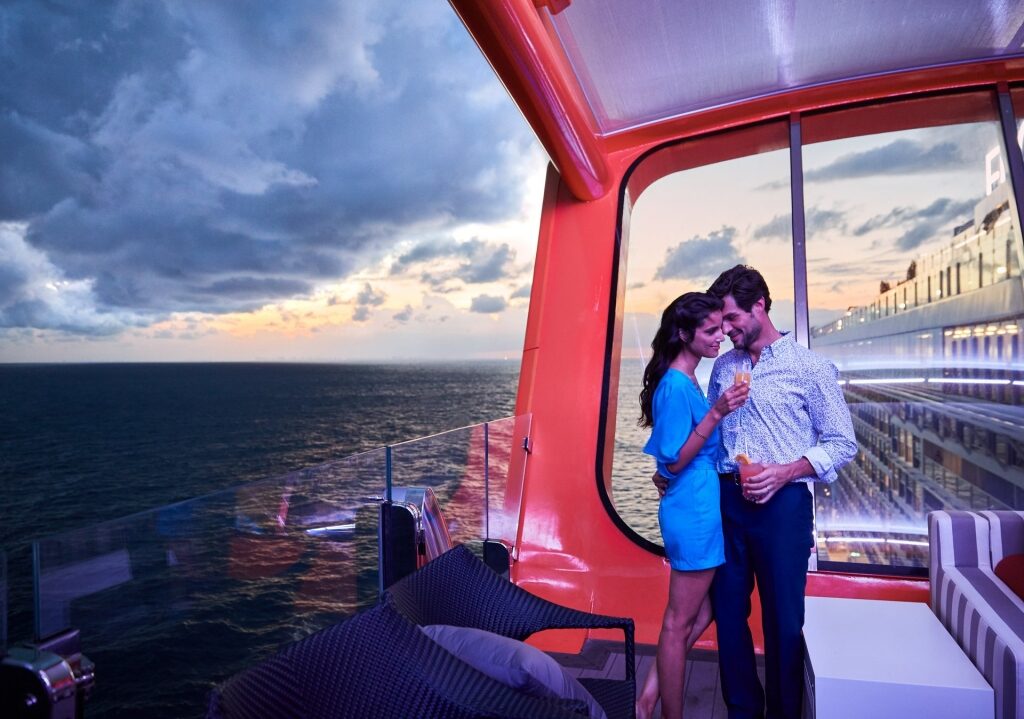
Celebrity Edge Magic Carpet
You’ll have one more day at sea to soak up the tropical sun on deck and enjoy the many features of the ship. Lounge at the Magic Carpet with a cocktail; this multipurpose platform is cantilevered over the side of the ship, with water on three sides, so you’ll feel as though you are flying. Or relax in the leafy serenity of Eden, or dine al fresco in the lovely Rooftop Garden Grill.
Browse cruises to Key West, Belize & Grand Cayman on Celebrity Apex
Cape Liberty to Bermuda
Charge your champagne glass and raise a toast to Lady Liberty on this seven-night voyage from Cape Liberty, New Jersey to chic Bermuda and back. As your ship, Celebrity Summit, edges out of port, you’ll have magnificent views of the Manhattan skyline as you sail right past the Statue of Liberty and then out under the iconic Verrazzano-Narrows Bridge, setting a course south-east to balmy Bermuda .
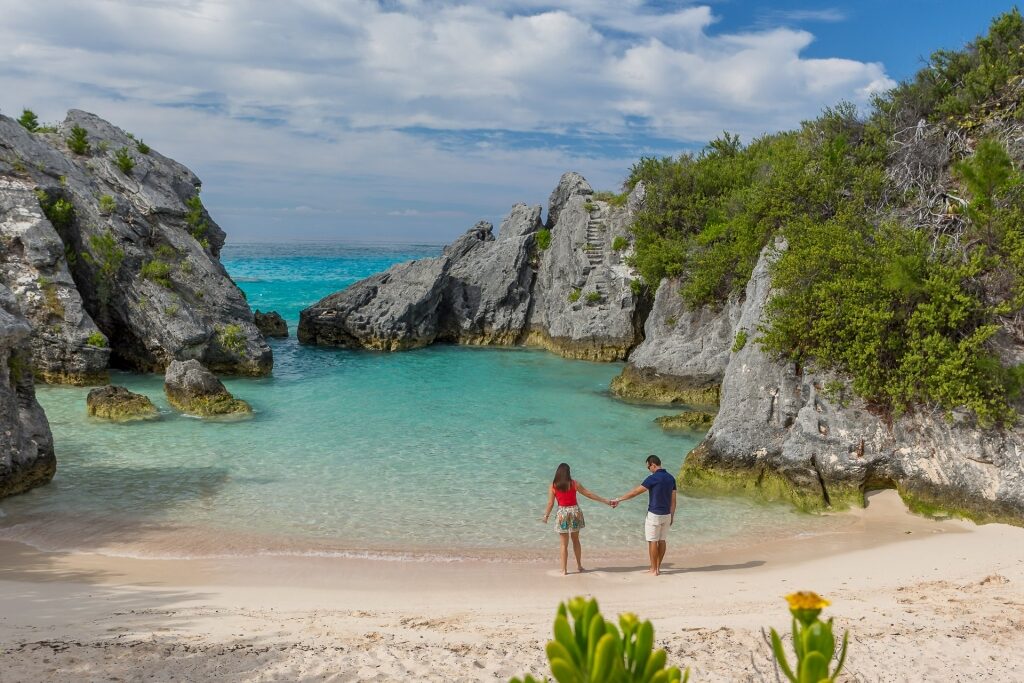
Jobson’s Cove Beach, Bermuda
Here, on this enchanted island where the sand is pink and the policemen wear knee-length shorts, you’ll have two and a half days to explore, which means two overnight stays .
There’s plenty to do, from snorkeling to golf, exploring the shops and galleries in Hamilton, the pastel-hued capital, and visiting the island’s forts. Hike the historic Railway Trail, consisting of 18 miles of scenic pathway following the course of an old railroad line.
Set sail on a catamaran trip at sunset, or join a pub crawl of Hamilton’s bars after dark. One of the most unique things to do in Bermuda is to sample a Dark ‘n’ Stormy, the powerful local specialty made of dark rum with ginger beer and a slice of lime.
Browse Bermuda cruise itineraries
Fort Lauderdale to Puerto Rico, St. Thomas, and St. Kitts
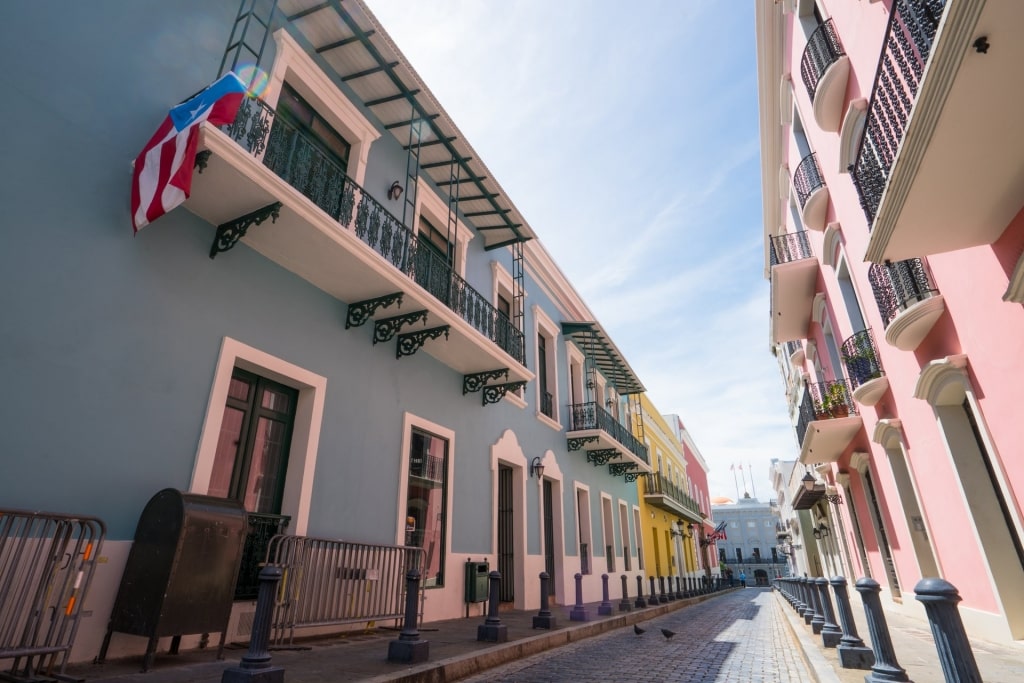
Old San Juan, Puerto Rico
Sail to the sun on Celebrity Apex, departing Fort Lauderdale, Florida for vibrant Puerto Rico , where an afternoon and evening in port mean you’ll see two faces of charismatic San Juan. Explore the chunky fortress, Castillo San Felipe del Morro, and the brightly colored streets of Old San Juan, or visit the Bacardi distillery to learn about and sample the famous rum.

Mount Liamuiga, St. Kitts
You’ll find plenty of military history at St. Kitts , like the rugged Brimstone Hill Fortress, a massive compound built by the British in 1690. This tiny island packs a real punch, with an enormous variety of things to do.
Trundle through the sugarcane fields on a scenic train journey, or hike Mount Liamuiga, a dormant volcano at the island’s center. Learn how to make your own gourmet truffles at a chocolate workshop. Visit neighboring Nevis and see the birthplace of Alexander Hamilton, one of the founding fathers of the U.S.
At Charlotte Amalie, St. Thomas , you’ll find it impossible to resist exploring the crystal-clear water via snorkeling, kayaking, or sailboat. For an afternoon basking on the gorgeous Honeymoon Beach, the lush, low-key island of St. John is an easy hop across the water.
Browse itineraries to Puerto Rico, St. Thomas, and St. Kitts on Celebrity Apex
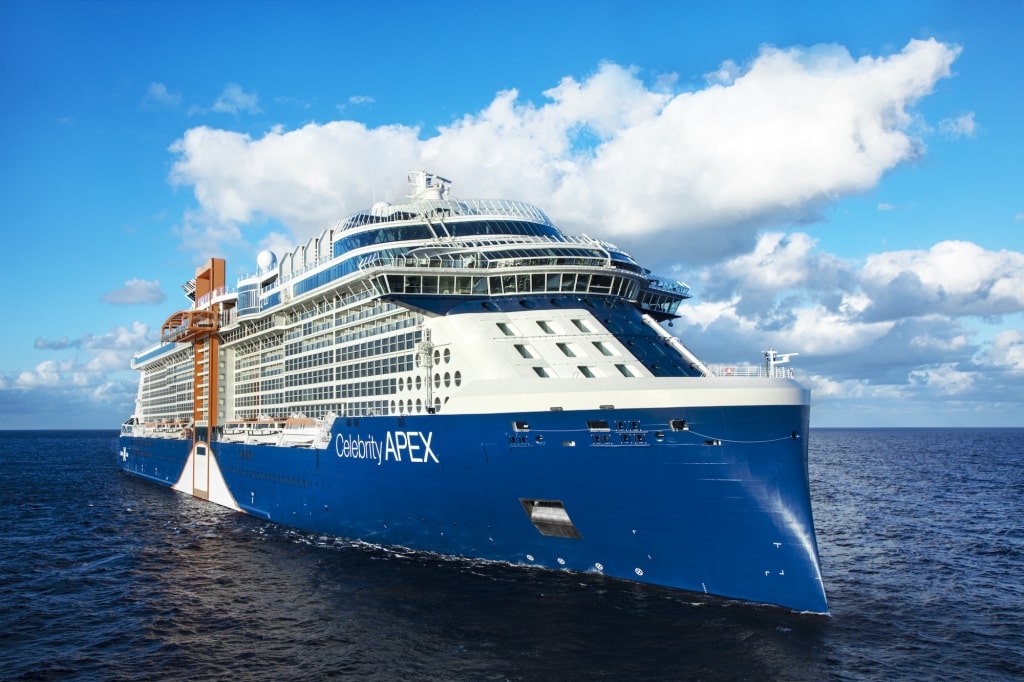
Celebrity Apex
Start planning your closed-loop cruise today and browse cruise itineraries on our website.
Sue has been writing about cruising for 20 years and is lucky enough to have sailed all seven continents. She lives in London, where she is cruise editor of The Times and The Sunday Times newspapers, as well as a freelance contributor to magazines and websites worldwide.
Related Itineraries
Bahamas & Mexico
- 5 nights ON CELEBRITY SUMMIT
- DEPARTING FROM MIAMI, FLORIDA
- Starting from $677 USD
San Juan, St. Maarten, St. Thomas & Puerto Plata
- 7 nights ON CELEBRITY APEX
- DEPARTING FROM FORT LAUDERDALE, FLORIDA
- Starting from $1169 USD
Ultimate Southern Caribbean
- 10 nights ON CELEBRITY SILHOUETTE
- Starting from $1472 USD
Key West, Belize and Grand Cayman
- Starting from $1512 USD
- 10 nights ON CELEBRITY BEYOND
- Starting from $1740 USD
Bimini, Grand Cayman & Mexico
- 6 nights ON CELEBRITY REFLECTION
- Starting from $3807 USD
Related Articles
Top 9 Best Short Cruises
10 Types of Cruises You Must Experience at Least Once
Overnight Cruises: Where to Go, What to See
Top Cultural Cruise Experiences
Best 5-Day Cruises
How to Choose a Cruise Itinerary
Port Vs. Starboard: What Side of the Ship Is Best?
11 Most Romantic Valentine’s Day Getaways Around the World
12 Thoughtful Cruise Gifts for the Cruiser in Your Life
Accessible Travel Guide
The Complete Guide to Dining Options on Celebrity Cruises
14 Travel Gifts for Dad Perfect for Father’s Day
Free Vacation Planning Services

CALL US 888-751-7804
Sign Up for Special Offers
- First Name *
- Last Name *
- Email Address *
- Country * Country Afghanistan Albania Algeria American Samoa Andorra Angola Antigua and Barbuda Argentina Armenia Australia Austria Azerbaijan Bahamas Bahrain Bangladesh Barbados Belarus Belgium Belize Benin Bermuda Bhutan Bolivia Bosnia and Herzegovina Botswana Brazil Brunei Bulgaria Burkina Faso Burundi Cambodia Cameroon Canada Cape Verde Cayman Islands Central African Republic Chad Chile China Colombia Comoros Congo, Democratic Republic of the Congo, Republic of the Costa Rica Côte d'Ivoire Croatia Cuba Curaçao Cyprus Czech Republic Denmark Djibouti Dominica Dominican Republic East Timor Ecuador Egypt El Salvador Equatorial Guinea Eritrea Estonia Ethiopia Faroe Islands Fiji Finland France French Polynesia Gabon Gambia Georgia Germany Ghana Greece Greenland Grenada Guam Guatemala Guinea Guinea-Bissau Guyana Haiti Honduras Hong Kong Hungary Iceland India Indonesia Iran Iraq Ireland Israel Italy Jamaica Japan Jordan Kazakhstan Kenya Kiribati North Korea South Korea Kosovo Kuwait Kyrgyzstan Laos Latvia Lebanon Lesotho Liberia Libya Liechtenstein Lithuania Luxembourg Macedonia Madagascar Malawi Malaysia Maldives Mali Malta Marshall Islands Mauritania Mauritius Mexico Micronesia Moldova Monaco Mongolia Montenegro Morocco Mozambique Myanmar Namibia Nauru Nepal Netherlands New Zealand Nicaragua Niger Nigeria Northern Mariana Islands Norway Oman Pakistan Palau Palestine, State of Panama Papua New Guinea Paraguay Peru Philippines Poland Portugal Puerto Rico Qatar Romania Russia Rwanda Saint Kitts and Nevis Saint Lucia Saint Vincent and the Grenadines Samoa San Marino Sao Tome and Principe Saudi Arabia Senegal Serbia Seychelles Sierra Leone Singapore Sint Maarten Slovakia Slovenia Solomon Islands Somalia South Africa Spain Sri Lanka Sudan Sudan, South Suriname Swaziland Sweden Switzerland Syria Taiwan Tajikistan Tanzania Thailand Togo Tonga Trinidad and Tobago Tunisia Turkey Turkmenistan Tuvalu Uganda Ukraine United Arab Emirates United Kingdom United States Uruguay Uzbekistan Vanuatu Vatican City Venezuela Vietnam Virgin Islands, British Virgin Islands, U.S. Yemen Zambia Zimbabwe

STAY IN THE KNOW
Thank you for subscribing.
See you on board soon.

Murthy Law Firm
- Consultations
- Client Service
- Online Services
Immigration Tips Before Taking a Cruise
While foreign nationals are typically mindful about confirming the permissibility of international travel prior to boarding a plane, an individual may be less mindful about another, less common form of travel – international cruises. However, like air travel, a foreign national should understand the nature of sea travel to avoid unwanted immigration consequences.
International Travel for Nonimmigrants
International travel considerations vary depending upon an individual’s immigration circumstances. In addition to a valid passport, a foreign national generally requires a certain travel document to be granted entry into the United States. A nonimmigrant typically requires a valid visa foil (commonly referred to as a visa “stamp”), while an individual with a pending form I-485, application for adjustment of status, with the U.S. Citizenship and Immigration Services (USCIS) must have an advance parole document, or valid nonimmigrant visa in certain cases, to leave the United States without abandoning the pending I-485 application.
Open Loop vs. Closed Loop Cruises
An international cruise is distinguished between closed loop and open loop cruises for travel document purposes. A closed-loop cruise starts and ends its voyage at the same U.S. port and only travels within the Western Hemisphere. By contrast, an open-loop cruise starts its voyage from one U.S. port but ends at a different U.S. port and/or travels outside of the Western Hemisphere.
For a closed-loop cruise, neither a U.S. citizen nor a lawful permanent resident (LPR) is required to have a passport to reenter the United States. A U.S. citizen can provide certain other proof of U.S. citizenship and an LPR can travel with only a green card. However, a nonimmigrant must show a valid passport and other appropriate travel documentation to reenter the United States whether the international cruise is closed or open-loop.
Cruises for Visa Waiver Program Travelers
If a foreign national entered the United States under the visa waiver program (VWP), the individual’s I-94W typically can be used for reentering the U.S. at the end of the cruise, provided that the person’s 90-day admission period has not expired, the cruise did not travel beyond adjacent islands or contiguous territory, and the individual was not outside the United States for more than 30 days. Additionally, a VWP traveler entering the U.S. by sea must receive an Electronic System for Travel Authorization (ESTA) approval from the U.S. Customs and Border Protection (CBP) before boarding the ship. An approved ESTA will be required for reentering the United States as a cruise ship passenger.
Documenting Reentry into the United States
A foreign national nonimmigrant or LPR should always document entries into the United States. Ink stamps in passports have been the best method for doing so, but the CBP generally has been expanding its stampless entry program and passport stamps are often not provided to an individual who disembarks from a cruise. Alternative options for documenting entries into the United States are explained in the MurthyDotCom NewsBrief, Expansion of CBP Stampless Entry Program (15.May.2023).
A cruise vacation may be possible for a foreign national; however, there are immigration concerns and document requirements that should be reviewed well in advance of travel to avoid unwanted consequences. Attorneys at the Murthy Law Firm regularly advise clients on immigration matters related to travel and are available to help ensure that a foreign national’s cruise is smooth sailing.
Copyright © 2023, MURTHY LAW FIRM. All Rights Reserved
You don't have to wait for a passport to travel: What to know about closed-loop cruises

When Chanel Sims graduated college, her mom rewarded her achievement by treating her daughter to a trip with Carnival Cruise Line .
But the July 2022 sailing – shortly after her graduation in May – didn’t leave Sims much time to get a key travel document: her passport.
Sims, now 24, had never gotten one. She tried once before to study abroad but was dissuaded by long wait times , and traveling internationally for fun wasn’t on her radar.
“I was a broke college student. I wasn’t going anywhere,” said Sims, who lives in Los Angeles and works for a life insurance agency.
Luckily for her, there was an alternative: She sailed with her family from Miami to the Bahamas, Turks and Caicos and back with just her photo ID and birth certificate.
In many cases, travelers can sail without a passport on round-trip voyages from the U.S. Here’s what to know.
What is a closed-loop cruise?
Closed-loop cruises are those that start and end at the same U.S. port and travel within the Western Hemisphere.
U.S. citizens booked on those sailings can leave and enter the country with proof of citizenship such as a birth certificate and – if 16 or older – a government-issued photo ID, according to U.S. Customs and Border Protection .
They can also use an enhanced driver’s license , which denotes both proofs of identity and citizenship, though those are available only in Michigan, Minnesota, New York, Vermont and Washington for now. Travelers can reenter the country from Canada, the Caribbean and Mexico with an EDL, but the documents are valid for border crossings only by sea or land.
Travelers under 16 can show an “original, notarized or certified copy of his or her birth certificate, a Consular Report of Birth Abroad issued by Department of State, (DOS) and/or Certificate of Naturalization issued by U.S. Citizenship and Immigration Services (USCIS),” according to Customs and Border Protection’s website.
Cruise lines may require you to have a passport anyway, however.
Regent Seven Seas Cruises, for example, requires passports for all voyages no matter the ports of call or countries visited, and destinations may call for them as well.
Carnival, which Sims sailed with, allows U.S. citizens to sail without a passport on qualifying cruises but "highly recommends that all guests travel with a passport valid for at least six months beyond completion of travel," according to its website .
How do I know if I can sail without a passport?
Cruise lines typically provide guidance for travelers on the requirements of their sailing, according to Drew Daly, senior vice president and general manager of travel agency franchise Dream Vacations. A travel adviser can also help fill in any blanks.
Cruising without a passport can be risky, though. The State Department encourages having one "in case of an emergency, such as an unexpected medical air evacuation or the ship docking at an alternate port," according to its website .
If travelers get stuck at a port of call, there will be “a lot of red tape you have to get through” to make it home without one, Daly said.
In those cases, they should contact the U.S. Embassy and local immigration authorities, he said. Daly also recommended taking a photo of your government IDs, which can be helpful backups when dealing with officials.
A travel adviser can hold travelers’ hands through the process, though Daly noted “it’s not something that happens a lot.”
Sims, for her part, was able to easily get off the ship at ports like Nassau with just her Sail & Sign card, she said, which acts as both a room key and means of charging items to your onboard account. After showing her birth certificate and photo ID during the initial boarding process, she kept them in a suitcase.
There are other advantages to having a passport. For instance, the document gives travelers who don't board their cruise in time more flexibility to meet the ship at its next stop. “You can’t fly to Mexico without a passport,” Daly said.
Routine processing of passports currently takes between 10 and 13 weeks, and seven to nine weeks for expedited service, according to the State Department . But most travelers who book with Dream Vacations plan their cruises at least six months out, according to Daly, which should give them plenty of time to get one: “So, we still highly encourage that.”
Nathan Diller is a consumer travel reporter for USA TODAY based in Nashville. You can reach him at [email protected] .

Closed Loop Cruise: What Is It? Everything you need to know
Closed Loop Cruise: Have you ever had a few days to spare and an intense urge to travel to the warm Caribbean or on an adventure in Alaska, only to discover that you are missing your passport or that it has expired? You can benefit from the ease of a closed-loop trip as a citizen of the United States—you don’t even need a passport for this.
A Closed Loop Cruise: What Is It?

The cruise ports in Cozumel are home to the massive cruise ships Carnival Valor and Carnival Conquest.
Beginning and ending in the same U.S. port is a closed-loop trip. Take a voyage that starts and ends in Miami, Florida, or sail nonstop from Seattle, Alaska.
A cruise that starts and ends in different ports in the United States (such as Miami and Fort Lauderdale) is not considered a closed-loop trip.
Typically, a closed-loop cruise would leave from Miami, Florida, make her way to Bermuda and the Caribbean, and then return to Miami.
Miami, Florida, is home to an MSC cruise ship. Cruises that depart from the United States and are round-trip must fulfill certain requirements.
Ships flying foreign flags are required by U.S. maritime law to make a minimum of one port call in a foreign nation.
Because most cruise ships operate under foreign flags, Alaskan itineraries often involve a stop in Canada, and Hawaiian cruises are rather uncommon.
Since most Caribbean and Bahamas sailings already entail international travel, they don’t need to worry about the need.
The cruise must start and conclude in the United States to be eligible for closed-loop classification. It can, however, travel to adjacent contiguous regions or islands, such as the Caribbean, Bermuda, Mexico, and Canada, that are part of the continental United States.
Cruise Ship Pilot: What is their Role and Responsibility?
Is a passport required for closed-loop cruises?

Passports are typically not required for closed-loop cruises. This is among the factors contributing to the popularity of these routes. Of course, if you have a passport or passport card, you can use them as identification. On closed-loop cruises, however, citizens of the United States are permitted entry and exit of the nation upon presentation of valid identification.
In addition to a birth certificate or passport, an enhanced driver’s license proves citizenship and identity.
They can be used to re-enter the United States at land, sea, and air border crossings, but not at airports.
The original, notarized, or certified copy of a birth certificate is acceptable for minors under 16.
Social Security numbers and voter registration cards are not accepted as evidence of citizenship.
If you are a lawful permanent resident (LPR) of the United States, there are still additional regulations. Although the U.S. government does not mandate passport ownership, it is always wise to check the regulations at the places on the itinerary, as they may change. To re-enter the country if you are an LPR, you will require an I-551 or Green Card. And whether or not you’re on a closed-loop cruise, you’ll need a passport if you’re not a citizen or legal permanent resident of the United States.
What is a Pullman Bed on a Cruise Ship and does it work?
There are a few things to be aware of if you decide to take advantage of this chance to travel without a passport. For instance, let’s say something goes wrong and you have to take a plane back to the United States. In this scenario, boarding an airplane would require a passport.
Additionally, you’ll have to find your way home or catch up with the trip if you miss the ship in one of the ports, which could be challenging without a passport. That won’t occur if you reserve an excursion with Celebrity Cruises, as the ship will wait for you.
What Documents Are Necessary for Non-US Nationals on a Closed-Loop Cruise?
For U.S. citizens, the majority of Caribbean islands just demand a picture ID. They may, however, demand a photo ID and a Permanent Resident Card from a U.S. Lawful Permanent Resident (LPR) (also known as a green card or I-551).
Should you not be a citizen of the United States or a lawful permanent resident, you will need to provide the necessary paperwork, which may include a passport. Passports are required for all cruises, even closed-loop sailings, for non-citizens of the United States.
According to U.S. Customs & Border Protection, U.S. citizens can enter the United States with a birth certificate and government-issued photo ID, including:
- U.S. Passport
- Passport Card
- Birth Certificate
- Enhanced Driver’s License
- Trusted Traveler Program card (NEXUS, SENTRI, or FAST)
- U.S. Military identification card when traveling on official orders
- U.S. Merchant Mariner document when traveling in conjunction with official maritime business
- Form I-872 American Indian Card
- Enhanced Tribal Card
Related Posts
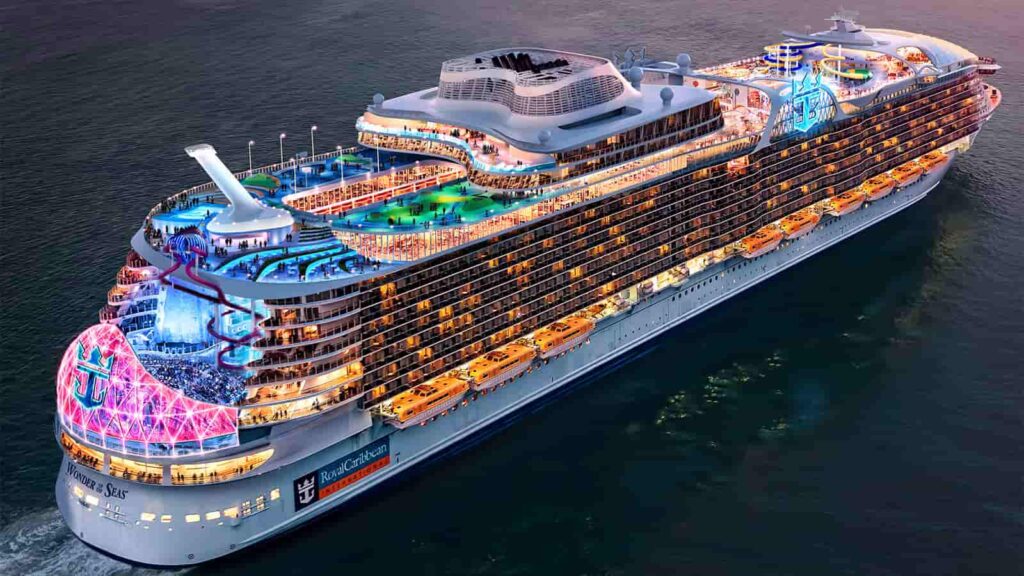
Royal Caribbean Cruises, History, Destinations and Itineraries

Ambassador Cruise Line: Ownership and History
Leave a comment cancel reply.
Your email address will not be published. Required fields are marked *
Save my name, email, and website in this browser for the next time I comment.

Ever Heard of a Closed-Loop Cruise? Here’s What to Know About These Unique Sailings
A lesser-known rule allows u.s. travelers to sail to some international destinations without a passport as long as they are on what is known as a “closed-loop cruise.”.
- Copy Link copied

You don’t need a passport to sail through Canadian ports en route to Alaska as long as you start and end your cruise at the same U.S. port.
Photo by Heather Shevlin/Unsplash
A closed-loop cruise is a cruise that departs from and returns to the same U.S. port and remains in the Western Hemisphere. As such, it does not require the passengers to have a U.S. passport—even if the itinerary visits some international ports along the way.
According to U.S. Customs and Borders Protection (CBP), rules established by the Western Hemisphere Travel Initiative require that U.S. citizens who are traveling abroad hold a valid passport—unless they are on a closed-loop cruise. Those sailing on a closed-loop cruise can enter or leave the country with an alternative proof of citizenship, such as a government-issued driver’s license or birth certificate.
If your sailing does not end at the same port where you began—for instance, if you are thinking of booking a one-way Panama Canal itinerary from San Diego, California, to Miami, Florida—you will need a passport. And be aware that some Caribbean islands (more on this in the Caribbean listing below) do require a passport, which means your cruise line will require a passport before you board the ship if you are sailing to a destination that independently requires it.
Do kids need a passport for a closed-loop cruise?
Kids do not need a passport if they are sailing on a closed-loop cruise. If there is a passport requirement, each person in your party needs to have a passport, including infants and toddlers. All cruises throughout the world that sail in destinations outside the United States and that are not closed-loop cruises require a passport.
What form of I.D. do you need for a closed-loop cruise?
If you are on a closed-loop cruise that begins and ends at the same port in the United States and visits Canada, Mexico, or much of the Caribbean, you do not need a valid passport. According to CBP, all you need is documentation proving you are a U.S. citizen. In lieu of a passport, you can present these alternative documents on a closed-loop cruise:
- Enhanced driver’s license, which is a state-issued driver’s license that provides proof of U.S. citizenship (currently available only to residents of Michigan, Minnesota, New York, Vermont, and Washington)
- Government-issued driver’s license
- Government-issued birth certificate
- Official certificate of naturalization
Where do closed-loop cruises sail?
Closed-loop cruise itineraries that do not require a passport include:
- Alaska: Cruise to Alaska on closed-loop sailings that typically start and end on the West Coast, stopping in Canada along the way.
- Bahamas: There are numerous closed-loop cruises to the Bahamas from ports up and down the Eastern Seaboard.
- Bermuda: Sail to Bermuda on closed-loop cruises from East Coast ports, including Baltimore, Boston, New York City, and Port Canaveral, Florida.
- Canada: You can sail round-trip to Canada on a closed-loop cruise from Boston, New York, and New Jersey.
- Caribbean: Start and end your Caribbean sailing in ports like Miami, Fort Lauderdale, or Tampa in Florida; Mobile, Alabama; New Orleans; or Galveston, Texas. Keep in mind that some islands—including Martinique, Guadeloupe, Barbados, Trinidad and Tobago, and St. Bart’s—do require a passport.
- Mexico: Sail down to Mexico on a closed-loop western Caribbean cruise from Florida ports, New Orleans, or Galveston, or to the Pacific side of Mexico to destinations such as Cabo San Lucas, Puerto Vallarta, and Mazatlán from California ports—without a passport. Belize and Honduras, which are sometimes included on these itineraries, also waive their passport requirements for cruise ship passengers.
The risks of not bringing a passport on a closed-loop cruise
Even though a passport is not required on a closed-loop cruise, there’s a reason why cruise lines often strongly encourage passengers to bring a passport. While you are in a foreign port, if you run into any problems and need to cut your trip short and fly home, you will need a passport to fly back into the United States—passports are required for international air travel. It can also be an issue if you miss your embarkation due to a flight cancellation or delay and need to fly to an international port of call to catch up with your cruise.


What is a Closed-loop Cruise?
Have you ever had a couple of weeks to kill and a burning need to fly off to the Caribbean or Alaska on an adventure, only to learn that you either don’t have a passport or that it has expired when you get there? A “closed-loop” cruise is an option that is advantageous for those who are citizens of the United States since it does not need a passport.
It’s possible that you’ve heard the phrase “closed-loop cruise” thrown about in the context of sailing and been interested in what it means. Even though it has something to do with the locations on the calendar completing a complete circle, there is more to the tale than that.
Closed-loop cruises are those that depart from and return to the same U.S. port. Excursions of this kind may range from a round-trip from Seattle to Alaska to a cruise from Fort Lauderdale to Fort Lauderdale. These cruises need to meet a slew of criteria before being accepted.

According to maritime law, any trip on a ship that is not flagged by the United States and that begins and ends in a port in the United States is required to make at least one stop at a port located outside of the United States. Cancun is a common port of call for Western Caribbean and Alaska cruises for the same reason that Vancouver is a common stop for Alaska cruises.
The itineraries of these cruises must cover only contiguous regions of the United States in order for them to be considered closed-loop vacations. This includes Mexico and Canada both of which share land borders with the United States, as well as a number of the islands that are located in the Caribbean.
Do You Need a Passport for a Closed-loop Cruise?
A closed-loop cruise is one that does not need you to have a passport for the majority of its passengers. This is among the main reasons why people choose to go on these kinds of vacations.
If you already have a passport or a passport card, you are free to use any one of those items as a form of identification. However, in the instance of closed-loop cruises, United States residents are permitted to depart or enter the nation so long as they provide confirmation that they are a citizen.
Things need to Verify Citizenship
An Enhanced Driver’s License, which is a state-issued driver’s license that delivers individuality evidence and U.S. nationality. A government-issued birth certificate or passport can also verify the identity of a person while traveling on a cruise. If the person is older than 16 or 16 years old, a government-issued driver’s license or picture ID defining headshot, name, and date of birth.
If you have an Enhanced Driver’s License, you may re-enter the United States from Canada, Mexico, or the Caribbean and it is acceptable at land and sea border crossings but not at airports. However, you cannot use it to fly into the United States.
What Are Some of the Best Closed-loop Cruise Itineraries?
Closes loop cruises attracts many tourists to visit place to place with in the time period. Some of the best closed loop cruises are:
1. Fort Lauderdale to Bahamas, Mexico, and Grand Cayman
Take a trip to the Islands and the clear, coastal weather of the Caribbean aboard the luxurious Celebrity Edge, one of the most cutting-edge and magnificent vessels now sailing the seas. Your trip will depart from Fort Lauderdale. You will spend the day in vibrant Nassau, which is located on New Providence Island.

During this time, you will have lots of time to explore the powder-sand shorelines, scuba gear over sparkling oceans, mart for artisans in the Straw Market, or experience excitement on one of the tremendous water activities at the glitzy Atlantis Hotel.
You will arrive at Puerto Costa Maya, Mexico, after a day at sea during which you may make the most of the ship and her exquisite Resort Vista. Swimming in the tranquil waters of the pristine Bacalar Lake, where you will float over cenote-fed water which is an incredible shade of aquamarine, is just one of the many options that await you in this area.
You may also go canoeing, sail and dive trips, or even have a therapeutic treatment with a real shaman if that sounds more your speed. Chacchoben Ruins, which are located within a short distance from the port, are home to Mayan artifacts and history.
2. Seattle to Alaska, the Inside Passage, and Dawes Glacier
Enjoy seven days aboard the Celebrity Solstice discovering the untamed grandeur of Alaska’s Inside Passage. This ship is ideal for such magnificent surroundings thanks to its plenty of outdoor area and upper Lawn Lounge.

You will go to the lovely community of Ketchikan, where you will have the opportunity to go on a journey to look for foxes, attempt your hand at kayaking, go on an adventure to hunt for king crab or simply wander about the town and take in all of its vibrant sights. Following that, you will spend a whole day gently sailing the 30-mile Endicott Arm Fjord.
You will also go to Juneau, which is a wonderful place to go whale watching, trekking, and on exhilarating flightseeing adventures over mountain ranges blanketed in snow. In Skagway, you’ll have the opportunity to ride the breathtaking White Pass and Yukon Route train, which will take you high up and over some rough peaks as it retraces the path of courageous explorers who traveled during the Gold Rush.
Before making your way back to Seattle, you will make a stop in the historically significant city of Victoria, which is located on the island of Vancouver in Canada. Here, you will have the opportunity to enjoy a delightful combination of tasteful British colonial design, hip stores, and artisanal brewpubs.
1. How do I tell if my cruise is closed-loop?
Closed-loop cruises are those that begin and conclude in the local harbor in the United States; for instance, traveling around Fort Lauderdale would qualify as an instance of a closed-loop trip.
The Western Hemisphere Travel Initiative, which mandates that cruise passengers traveling inside the Americas must be in possession of a valid passport, establishes the parameters for closed-loop cruises.
2. Can a felon go on a closed-loop cruise?
Yes, convicts are permitted to go on cruises with either a closed or open loop, depending on the kind of voyage. On the other hand, the prerequisites for going on an open-loop cruise are far more stringent than those for closed-loop cruises.
To leave and enter the United States while on a closed-loop cruise, all you need is evidence of nationality, such as your birth card. This is the case even if you are a citizen of the United States.
3. Do Carnival Cruises allow birth certificates as proof of citizenship?
The Carnival Company possesses a significant number of the most well-known cruise companies in the market at the present time. The types of documentation that are required in order to go on a trip will typically vary from cruise line to cruise line.
For instance, Carnival Cruise Line claims that the birth document doesn’t have to be certified or signed, however, Royal Caribbean Line insists that all papers, including the birth certificate, need to be original or signed and sealed. Before you set sail, you should always check in with your cruise operator.
4. Do Minors Need A Passport To Go On A Closed Loop Cruise?
In most cases, children under the age of 16 who are traveling with a parent or guardian do not require a passport; nonetheless, you must bring at least a birth document with you as evidence of nationality.
Additionally, several cruise companies mandate that children remain either in the exact same room as their parents or guardians or in a cabin that is close to their cabin.
Nevertheless, any child who is traveling solo or with an individual who isn’t their parent or guardian requires the appropriate papers demonstrating their identity and authorization to voyage by themselves. This includes authorization to go aboard a cruise ship. If there is no one in the party who is at least 21 years old, it is extremely vital to get a documented letter of agreement from the legal guardian or parent.
This consent denotes that the child has been given permission to travel alone, which may seem restrictive, but it helps prevent questions of culpability in the event that the minor is injured or is involved in an incident.
A closed-loop cruise is one of the best options for couples but anyone can enjoy it. A different cruise experience and a better traveling experience and one of the best ways to pass time.
Angel Portillo is an experienced tourism professional who has worked in the travel industry for many years. He has extensive knowledge of the different destinations that are popular among tourists, and is able to provide tips and advice on how to make the most of your visit. His passion for travel is evident in her writing, which is full of interesting and descriptive details about the different places he's visited.
Similar Posts

St. John Island Tour Reviews
St. John is the tiniest of the three principal US Virgin Islands. People think that three of the Virgin Islands are some of the most beautiful places in the world. These islands include St. Croix, St. Thomas, and the jewel that is St. John. The Virgin Islands are known for their verdant hills, magnificent coastlines,…
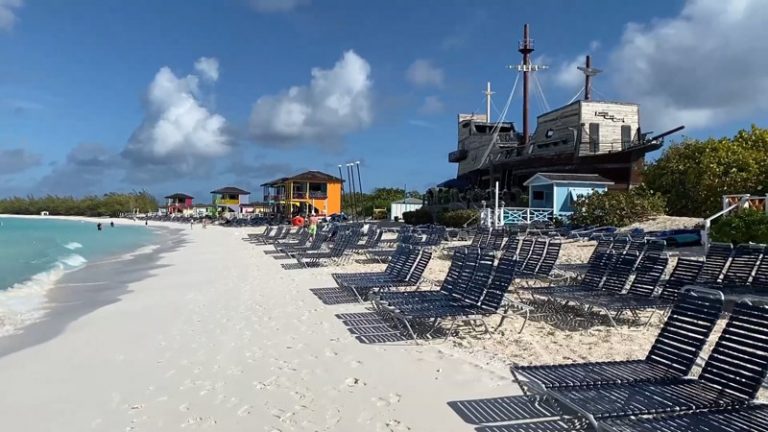
Half Moon Cay Cabanas – Everything You Need to Know
The Half Moon Cay Cabanas provide a great feeling with the weather. The cabanas are perfect for a relaxing day with friends or family. The views are amazing, and the cabanas themselves are very comfortable. The cabanas are a great place to stay when visiting the Half Moon Cay Resort. The cabanas are a great…

How to Congratulate Someone on a New Boat?
Congratulations are a way to express happiness and excitement for someone’s achievements or special events in their life. They can be verbal or written and are often accompanied by words of encouragement and well-wishes. Congratulating someone is a way to show support and celebrate their success, and can be a thoughtful and meaningful gesture. There…

20 Facts You Should Know Before Working on a Cruise Ship
An occupation aboard a cruise ship may seem like a fantasy, and for some people it is. My three years at sea were filled with many exciting adventures, but there were also many occasions when life seemed like a nightmare. If life at sea is something you’re contemplating, or if you’re simply wondering about what…

30 Things to Do in Half Moon Cay?
Half Moon Cay, Bahamas, is a port of call for many cruises because of its abundance of attractions. The nicest aspect about this location is that your cruise fare already covers your meals and some beverages, so you may invest as much or as little as you wish. Half Moon Cay, Bahamas, owned by Carnival…
![open loop vs closed loop cruise Should I Take a Cruise? [Tips and Advice for Cruise Travel]](https://awcv.com/wp-content/uploads/2022/10/Cruise-Ship-1-768x432.jpg)
Should I Take a Cruise? [Tips and Advice for Cruise Travel]
Of course, you should take one. Cruise ships offer a variety of comforts. They have restaurants, bars, and shops for you to enjoy during your stay on board. From a space for you to breathe fresh air by yourself to your medication, everything is present on a cruise, providing you with the utmost enjoyment and safety of the tour.
Leave a Reply Cancel reply
Your email address will not be published. Required fields are marked *
Save my name, email, and website in this browser for the next time I comment.
Phone: 4045072997
Lindsey Markwood
- Jul 6, 2023
Open-jaw vs Closed Loop Cruise
Updated: Sep 18, 2023
You might have heard the terms open-jaw cruise and closed loop cruise? What does that mean and what is the difference? This article will explore the difference in these two types of cruises.

A closed loop cruise means you start and end in the same port within the United States and travel within the Western hemisphere. These are the most common type of cruises for passengers from the United States. There are many advantages to a closed loop cruise. It is much easier getting to/from your cruise as you can fly roundtrip or drive and park at the port depending on where you are traveling from. Most closed loop cruises do not require you have a passport to board. Disclaimer: that is not true for all cruise lines – please work with me to find out the requirements for your cruise. Usually the same itinerary is repeated on a closed loop cruise which gives you more flexibility on when you want to cruise.
An open-jaw cruise is a cruise that begins in one port and ends in a different port. These are a lot less common than a closed-loop cruise. You will find the most number of open-jaw cruises in Alaska. For Alaska, northbound cruises the cruise typically starts in Vancouver, Canada and ends in near Anchorage, Alaska in Seward or Whitter. (A Southbound cruise would be the exact opposite). A repositioning cruise is another very popular type of open-jaw cruise. Lets go back to our Alaska example. During the summer months Alaska is very popular among cruise travelers. However as the days get shorter, and the temperatures get colder Alaska does not get as many cruise passengers. With less demand, cruise lines will reposition their ships to warmer waters such as cruises that go to the Caribbean. In order to get the ship from Vancouver to it new home port in Florida, the ship will need to reposition itself. It could make several stops before and after the Panama Canal before finally ending up in the new home port.
Seasoned cruisers typically love the repositioning cruises as they can be longer than a typical cruise and they can go to unique ports of call that are not frequently visited by that specific cruise line.
Both an open-jaw and closed loop cruises stop at a few different ports during the cruise. How many ports and see days will vary based on cruise length and itinerary. The ports can be in the same or different countries as well.
Which is better for you? That 100% depends on your family. Not sure which cruise line or cruise itinerary works best for your family? That is where I come in. Let me find the perfect cruise and take the stress of travel planning off your plate. Click here for a cruise quote.
Happy cruising travelers!
Travel Curator

- Ocean Cruise
Recent Posts
Cruise Terminology
What is better Expedition Cruising vs. Ocean Cruising For Your Family Vacation

- Destinations
- Cruise & Travel Blog
- Group Cruises
- Luxury Cruises
- River Cruises
- Specialty Cruises
- World Cruises
- All Cruise Lines
- Best Price Guarantee
- Advanced Cruise Search
Closed Loop Cruise: Passport Requirements & Destinations
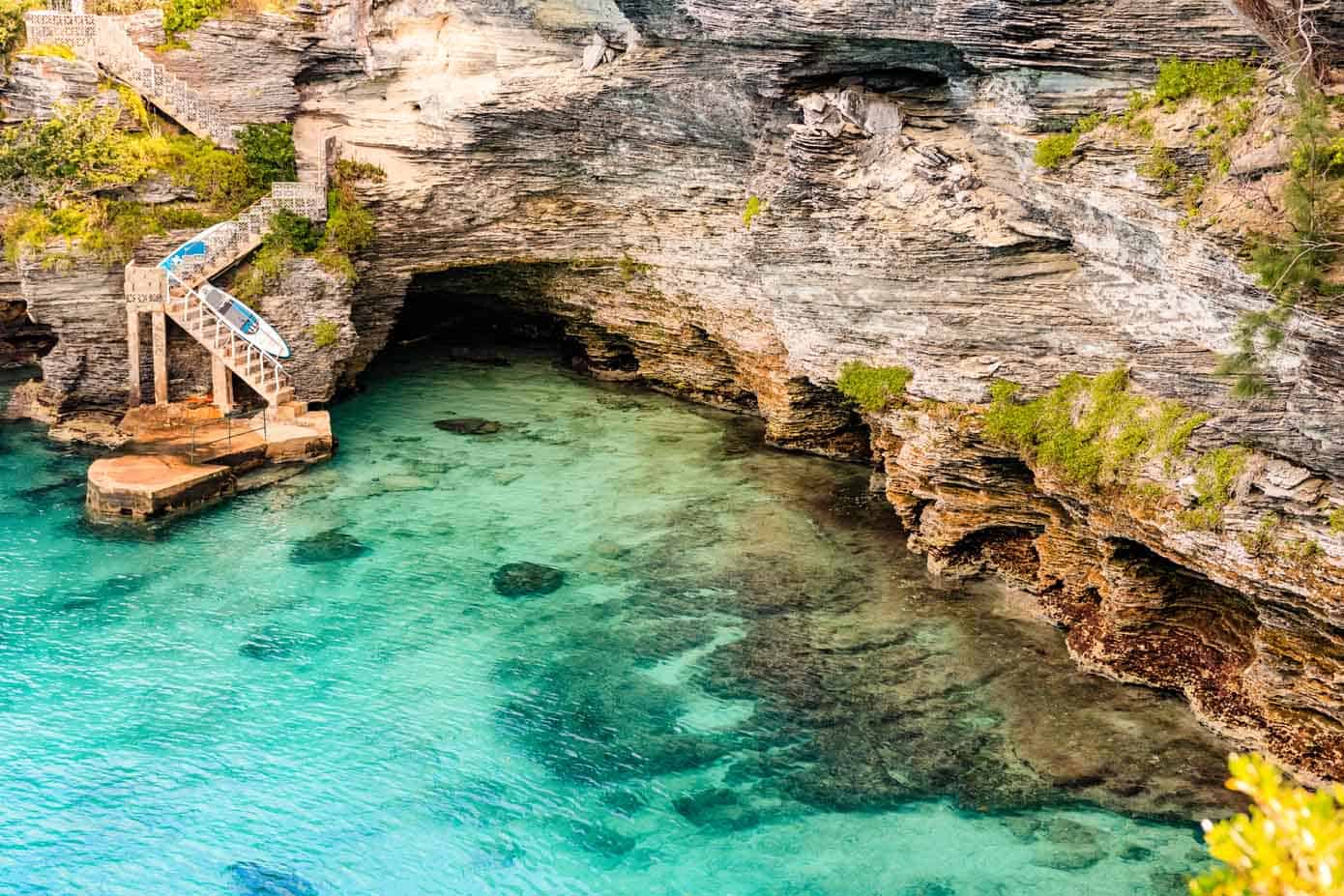
Got a few free days and looking to go on a trip, but don’t have a passport? Don’t worry, you still have plenty of options! If you passport has expired, or you never got a passport in the first place, you are still able to visit several foreign countries as a U.S. citizen. The answer to your “problem” is a closed loop cruise.
These types of cruises allow you, as an American, to sail to amazing destinations without a passport. Below, we take a look at what closed loop cruises are and tell you exactly which places you can visit on a closed loop cruise.
What Is a Closed Loop Cruise?
First things first, though—what is a closed loop cruise? The answer is right there, in the name. Closed loop cruises have “closed” itineraries, meaning that they start and end in the same U.S. port. On the way, however you may visit some other destinations, whether within the United States or in other countries. All closed loop cruises are round-trip cruises from the same port in the United States.
Places You Can Go on a Closed Loop Cruise (Without a Passport)
Even though closed loop cruises can’t take you wherever you want to go, the destination choices may be more diverse than you’d expect. From the beaches of the Bahamas to the wilderness of Alaska, these are the greatest place you can visit on a closed loop cruise without a passport.
Explore the rugged coasts of Alaska on a closed loop cruise from cities like Seattle and San Francisco . Visit the historic coastal towns of Skagway, Sitka and Juneau, and see iconic wildlife, from orcas and whales to brown bears and bald eagles.
Cruise around the Hawaiian Islands and soak up that glorious tropical sunshine. See waterfalls and rainbows, enjoy amazing Polynesian food and hit the waves on a surfboard. Cruises to Hawaii start in most major West Coast cities, such as San Diego , Los Angeles and Seattle.
New England and Eastern Canada
Discover the rocky coasts of New England and eastern Canada on a closed loop cruise from Boston or New York City. Indulge in world-class seafood, see beautiful lighthouses, visit seaside villages and explore important historic sites.
One of the most accessible tropical islands from the U.S. East Coast, Bermuda is a popular destination for closed loop cruises. You can visit this gorgeous, historic island on round-trip cruises from Boston and other East Coast ports. Swim with dolphins , visit the Royal Navy Dockyard or scuba dive to a shipwreck.
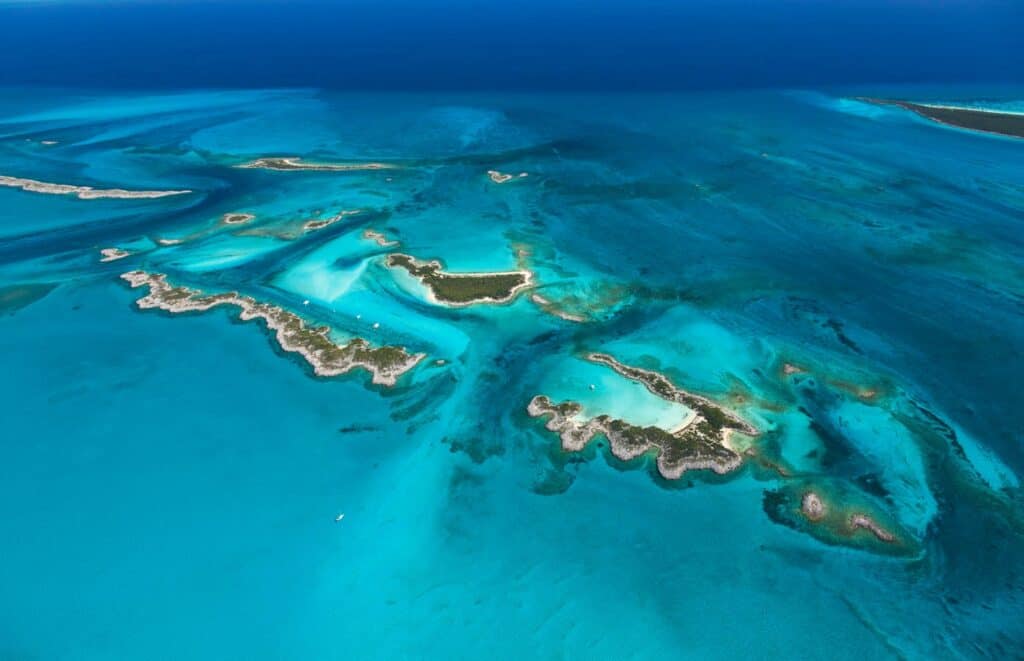
The Bahamas
Blessed with near-perpetual sunshine and stunning beaches, the Bahamas are one of the world’s most popular cruise destinations. As a Caribbean island nation, it’s an excellent place to visit without a passport on closed loop cruises. Departure ports include Baltimore , Charleston, Jacksonville, Miami and other southeastern U.S. cities.
The Caribbean
Comprised of the Western, Eastern and Southern Caribbean Island, the greater Caribbean region is home to some of the greatest beach destination on the planet. Go on a closed loop cruise from Florida and visit such stunning islands as St. Lucia, Barbados, the U.S. Virgin Islands, Martinique and Bonaire. Remember, however, that some of these island nations may require you to have a passport to enter.
Whether it’s a Baja California cruise from San Diego or L.A., or a cruise to Cozumel from the East Coast, Mexico is a great closed loop cruise destination. Discover ancient temples and architecture, sample classic Mexican cuisine, sunbathe on amazing beaches and partake in endless outdoor adventures. Check out the best time to cruise to Mexico here .
So, for example, you can board a cruise ship in Miami, Florida , stop at least one foreign port in places like Mexico, the Bahamas or the Caribbean, and return to the port of Miami afterwards. This is a closed loop cruise. As a U.S. citizen, you will not need a valid passport to leave and re-enter the United States this way.
If, however, you depart from Miami, sail through the Panama Canal , visiting a foreign port on the way, and disembark in Los Angeles, you have not been on a closed loop cruise, even though both your departure and arrival ports are in the United States. These kinds of one-way cruises require all passengers to have a valid passport.
Good to know: Maritime laws state that cruise ships not sailing under the American flag must stop in at least one port of call outside the United States. Great examples of this include a stop in Canada on Alaska cruises , a stop in Bermuda on a round-trip from Boston, or a stop in Cozumel from Fort Lauderdale.
Remember: The start and end point of your cruise must be the same U.S. port.
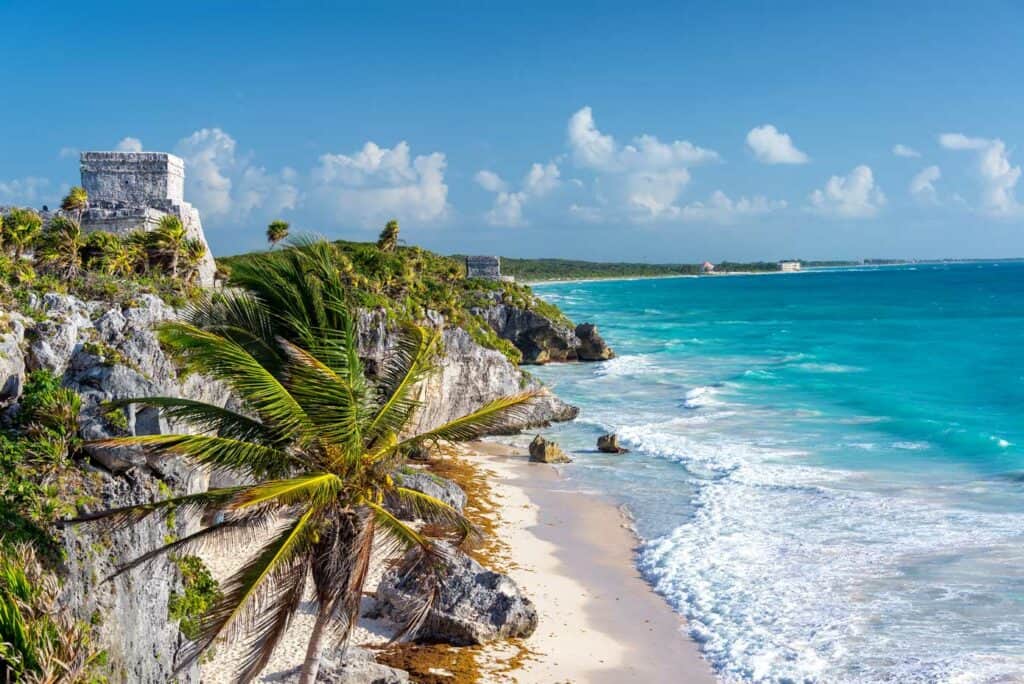
Do I Need a Passport on a Closed Loop Cruise?
American citizens do not need a passport to go on a closed loop cruise. They can leave and re-enter their own country without a passport. However, it is important to know that another proof of citizenship will be required instead.
According to the U.S. Customs and Border Protection Information Center , other valid proofs of citizenship you can use to go on closed loop cruises besides a passport are:
- Enhanced Driver’s License (EDL);
- Government-issued birth certificate; or
- Government-issued certificate of naturalization
If you’re 16 or older, you will also need a valid government-issued driver’s license or picture ID that contains your photo, name and date of birth.
U.S. citizens younger than 16 may use an original, notarized or certified copy of their birth certificate to go on a closed loop cruise. They do not need other documents to leave and re-enter the USA.
Note, however, that this does not necessarily mean that the countries on your itinerary, especially in the Caribbean, won’t still require you to have a passport to enter. If that’s the case, your cruise line might already require you to have a passport to board the ship—even if U.S. Customs and Border Protection does not.
If you aren’t sure, please ask your cruise line about this in advance. A closed loop cruise refers only to U.S. immigration regulations and passport requirements for U.S. citizens. It does not reflect those of the destinations on the closed loop cruise.
How Do I Know If My Cruise Is Closed Loop?
This is pretty straightforward. As we’ve mentioned above, a closed loop cruise is a cruise that departs from and returns to the same port in the United States. It’s really that simple.
Get a price on a cruise in this post
Born and raised in Belgium, Bram is currently based in the Pacific Northwest where he spends his days blogging, hiking, indulging in freshly roasted coffee and sipping craft beers. An experienced traveler, his… More about Bram R
Keep reading
Limited time cruise deals, viking: april ocean sale.

Viking: July 2024 Sale

Fill out the form below to get a quick, free quote
- Name * First Last
- Do you have an agent you’ve worked with or are working with at Cruise Travel Outlet?
- How many passengers? * Please select one: Number of passengers: 1 2 3 4 5 or more
- Where are you in the booking process? * Please select one: I am... Still gathering information Looking for pricing Ready to book
- What type of cabin? *
- Preferred travel date *
- More Information Please tell us about the cruise or deal you're interested in. Be specific if you can.
- Get the latest hand-picked cruise deals and discounts delivered to your inbox.
- I agree to the privacy policy .
- Comments This field is for validation purposes and should be left unchanged.
Comments (0)
Whoops! No comments yet. Start the conversation!.
Join the conversation
Submit a comment today.

An official website of the United States government
Here’s how you know

Official websites use .gov A .gov website belongs to an official government organization in the United States.
Secure .gov websites use HTTPS A lock ( Lock A locked padlock ) or https:// means you’ve safely connected to the .gov website. Share sensitive information only on official, secure websites.

- For U.S. Citizens/Lawful Permanent Residents
Western Hemisphere Travel Initiative
What is the Western Hemisphere Travel Initiative (WHTI)?
WHTI is the joint Department of State (DOS) and Department of Homeland Security (DHS) plan to implement a key 9/11 Commission recommendation and the statutory mandates of the Intelligence Reform and Terrorism Prevention Act of 2004 (IRTPA). IRTPA, in part, required the DHS and DOS to develop and implement a plan to require all travelers, U.S. citizens and foreign nationals alike, to present a passport or other acceptable document that denotes identity and citizenship when entering the United States.
What is the goal of requiring secure documents?
The goal is to strengthen border security while facilitating entry into the United States for U.S. citizens and legitimate international travelers, making the process more efficient and convenient.
What types of documents are accepted for entry into the United States via air?
- U.S. citizens can present a valid: U.S. Passport; Trusted Traveler Program card (NEXUS, SENTRI or FAST); U.S. Military identification card when traveling on official orders; U.S. Merchant Mariner document when traveling in conjunction with official maritime business. Note that children are also required to present their own passport when traveling by air. (note: The Indian/tribal card can NOT be used for air travel).
- Requirements for lawful permanent residents of the United States are not changed by the implementation of WHTI. Lawful permanent residents must continue to present a valid Permanent Resident Card. A passport is not required.
What types of documents are accepted for entry into the United States via land and sea?
- U.S. citizens can present a valid: U.S. Passport; Passport Card; Enhanced Driver’s License; Trusted Traveler Program card (NEXUS, SENTRI or FAST); U.S. Military identification card when traveling on official orders; U.S. Merchant Mariner document when traveling in conjunction with official maritime business; or Form I-872 American Indian Card, or (when available) Enhanced Tribal Card.
- U.S. and Canadian citizen children under the age of 16 (or under 19, if traveling with a school, religious group, or other youth group) need only present a birth certificate or other proof of citizenship. The birth certificate can be original, photocopy, or certified copy.
- WHTI does not affect U.S. Lawful Permanent Residents, who are still required to present their permanent resident card (Form I-551) or other valid evidence of permanent residence status.
- Canadian citizens can present a valid passport, Enhanced Driver’s License, or Trusted Traveler Program card (NEXUS, SENTRI or FAST).
- Bermudian citizens are required to present a valid passport.
- Mexican citizens, including children, are required to present a passport with visa, or a Border Crossing Card.
- U.S. citizens on closed-loop cruises (cruises that begin and end at the same U.S. port) are able to enter the United States with a birth certificate and government-issued photo ID. Please be aware that you may still be required to present a passport to enter the countries your cruise ship is visiting. Check with your cruise line to ensure you have the appropriate documents.
What is an enhanced driver’s license?
State-issued enhanced drivers licenses (EDLs) provide proof of identity and U.S. citizenship, are issued in a secure process, and include technology that makes travel easier. They provide travelers with a low-cost, convenient alternative for entering the United States from Canada, Mexico or the Caribbean through a land or sea port of entry, in addition to serving as a permit to drive.
The Department has been working with states to enhance their driver’s licenses and identification documents to comply with travel rules under the Western Hemisphere Travel Initiative (WHTI), effective June 1, 2009.
How do I get a passport?
United States citizens can visit the State Department’s travel website or call the U.S. National Passport Information Center at (877) 4USA-PPT; TDD/TTY: (888) 874-7793.
What if I don’t have the required documents when I travel to or return to the United States?
Travelers without WHTI-compliant documents are likely to be delayed at the border as CBP officers work to verify identity and citizenship.
Winter is here! Check out the winter wonderlands at these 5 amazing winter destinations in Montana
- Plan Your Trip
What Is A Closed Loop Cruise
Published: December 14, 2023
Modified: December 28, 2023
by Michaela Layman
- Sustainability
Introduction
When it comes to exploring the world on the high seas, there are various types of cruises to choose from. One such type is the closed loop cruise, which offers a unique and convenient way to travel. If you’re unfamiliar with the concept of a closed loop cruise, don’t worry – this article will provide you with all the information you need to know.
A closed loop cruise refers to a roundtrip journey where the cruise ship departs from and returns to the same port. Unlike open-jaw cruises that start and end in different ports, closed loop cruises allow passengers to board and disembark at the same location.
There are several benefits to choosing a closed loop cruise. Firstly, it offers convenience and simplicity, as you won’t have to worry about arranging separate flights or transportation to and from different ports. This makes it an ideal option for those who prefer a hassle-free travel experience.
Secondly, closed loop cruises often provide the opportunity to explore multiple destinations without the need for additional visas or travel documents. Since the cruise ship returns to the same port, passengers can take advantage of shore excursions and explore different cities or countries, all while staying within the closed loop framework.
Not only does this save time and effort, but it also allows for more diverse travel experiences. Whether you’re a history buff, a nature lover, or an adventure seeker, a closed loop cruise can offer a range of destinations and activities to suit your preferences.
In addition to the convenience and variety it offers, a closed loop cruise can also have a positive environmental impact. By minimizing the need for additional transportation and reducing carbon emissions associated with multiple flights or port transfers, closed loop cruises are a more sustainable option for eco-conscious travelers.
In the next sections of this article, we will explore the benefits of closed loop cruises, the environmental impact they have, popular destinations for this type of cruise, how to plan your own closed loop cruise, and helpful tips for making it a sustainable and enjoyable experience. So, let’s embark on this journey and discover the captivating world of closed loop cruises!
Definition of Closed Loop Cruise
A closed loop cruise, sometimes also referred to as a roundtrip cruise, is a type of cruise itinerary where the ship departs from and returns to the same port. This means that passengers board the ship at a specific port, sail to various destinations, and then return to the original port of embarkation to disembark.
The closed loop nature of these cruises provides travelers with the convenience of starting and ending their journey at the same location. They eliminate the need for making separate travel arrangements to and from different ports, making it a popular choice for those seeking a hassle-free vacation experience.
One key aspect of closed loop cruises is that they typically follow a circular route. The ship may sail to multiple destinations, exploring different cities or even countries, but it always returns to its original port of departure. This allows passengers to enjoy the benefits of visiting diverse locations while still enjoying the comfort and familiarity of their starting point.
It’s important to note that closed loop cruises can be operated by various cruise lines and cater to different budgets and preferences. They can range from short weekend getaways to longer voyages spanning several weeks. The choice of itineraries and destinations depends on the cruise line, the ship, and the specific time of year.
Whether you’re interested in exploring the picturesque ports of the Mediterranean, embarking on an Alaskan adventure, or discovering the vibrant culture of the Caribbean, there’s likely a closed loop cruise that suits your desired destination and travel style.
One thing to keep in mind is that closed loop cruises are different from open jaw or one-way cruises. Open jaw cruises start and end in different ports, which can require additional travel arrangements to get back to the original departure point.
In summary, a closed loop cruise offers the convenience of starting and ending your journey at the same port, allowing you to explore multiple destinations without the need for separate transportation arrangements. It provides a circular route, returning to the original port of embarkation, and can be tailored to different preferences and budgets.
Benefits of Closed Loop Cruises
Closed loop cruises offer a range of benefits that make them an attractive option for travelers. Whether you’re a seasoned cruiser or planning your first voyage, here are some notable advantages of choosing a closed loop cruise:
- Convenience: One of the main advantages of closed loop cruises is the convenience they provide. With a closed loop itinerary, you can start and end your journey at the same port, eliminating the need for separate flights or transportation arrangements to different ports. This makes the planning process much simpler and reduces the stress of coordinating travel logistics.
- Cost-Effective: Closed loop cruises can often be more budget-friendly compared to other types of cruises. Since you won’t need to book additional flights or transport between different ports, you can save on travel expenses. In some cases, roundtrip cruises may also include special promotions or discounted rates, making them an affordable option for a memorable vacation.
- Explore Multiple Destinations: Despite returning to the same port, closed loop cruises offer the opportunity to explore multiple destinations. Cruise itineraries are designed to include various ports of call, allowing passengers to experience different cities, cultures, and attractions along the way. From historical sites to tropical islands, each stop on the itinerary offers a unique experience.
- Diverse Activities and Excursions: Closed loop cruises cater to a wide range of interests and preferences. Whether you’re looking for relaxation, adventure, or cultural immersion, you’ll find a variety of activities and excursions available at each destination. From snorkeling in crystal-clear waters to visiting UNESCO World Heritage sites, there’s something for everyone to enjoy.
- Familiarity and Comfort: Another benefit of closed loop cruises is the familiarity and comfort they provide. Being able to return to the same ship and cabin after exploring different destinations can offer a sense of stability and convenience. You’ll have access to familiar amenities, restaurants, and entertainment facilities, allowing you to relax and unwind after a day of adventuring.
- Simplified Documentation: One practical advantage of closed loop cruises is the simplified documentation process. Since the cruise departs and arrives at the same port, you typically won’t need to obtain additional visas or travel permits for different countries. This makes the travel experience smoother and lessens the administrative burden.
- Family-Friendly: Closed loop cruises are often an excellent choice for families. With a variety of onboard activities, entertainment options, and organized shore excursions suitable for all ages, there’s something to keep everyone in the family entertained. Additionally, the convenience and simplicity of a closed loop itinerary can make traveling with children more manageable and stress-free.
Overall, closed loop cruises offer a combination of convenience, cost-effectiveness, and the opportunity to explore multiple destinations. With a range of activities and excursions available and a simplified travel process, these cruises provide an enjoyable vacation experience for travelers of all ages and interests.
Environmental Impact of Closed Loop Cruises
As awareness of environmental sustainability grows, more travelers are seeking ways to reduce their carbon footprint while still enjoying their vacation. Closed loop cruises can offer a more environmentally friendly option compared to other forms of travel. Here are some key considerations regarding their environmental impact:
- Reduced Carbon Emissions: Closed loop cruises have a lower carbon footprint compared to other types of travel, particularly air travel. By eliminating the need for additional flights between ports, these cruises help reduce the overall carbon emissions associated with transportation. Passengers can enjoy the journey, visit multiple destinations, and return to the same port using a smaller amount of fuel compared to individual flights.
- Efficient Use of Resources: Cruise ships are designed to be more efficient in their use of resources, including energy and water. They incorporate advanced technologies and practices to minimize waste production, conserve water, and utilize renewable energy sources where feasible. This commitment to resource efficiency helps minimize the environmental impact of closed loop cruises.
- Strict Environmental Regulations: The cruise industry is subject to strict environmental regulations and standards aimed at protecting marine ecosystems. Cruise lines must adhere to international and national laws regarding wastewater treatment, air emissions, and waste management. These regulations help ensure that closed loop cruises are conducted responsibly and in an environmentally conscious manner.
- Support for Sustainable Practices: Many cruise lines are actively implementing sustainable practices and initiatives to minimize their environmental impact. These can include recycling programs, energy-efficient technologies, and partnerships with local communities to support responsible tourism. Some cruise lines even offer shore excursions focused on conservation efforts, allowing passengers to actively participate in environmental initiatives.
- Awareness and Education: Closed loop cruises also provide an opportunity for raising awareness about environmental issues. Cruise lines often provide educational programs and activities for passengers, highlighting the importance of protecting the oceans and marine life. These initiatives help increase understanding and encourage responsible behaviors among passengers, both on board and during shore excursions.
- Preservation of Coastal Communities: Closed loop cruises contribute to the preservation of coastal communities by supporting local economies and promoting sustainable tourism practices. These cruises bring visitors to different ports, where they can engage with local businesses, artisans, and cultural experiences. By supporting local communities, closed loop cruises help ensure the long-term viability of these destinations for future generations.
While closed loop cruises still have an environmental impact to consider, their commitment to resource efficiency, adherence to strict regulations, and support for sustainable practices make them a more eco-conscious choice compared to other forms of travel. As a traveler, you can further minimize your impact by participating in eco-friendly activities and supporting cruise lines with solid environmental stewardship practices.
Popular Destinations for Closed Loop Cruises
Closed loop cruises offer the opportunity to explore diverse destinations and experience the best of each region while returning to the same port of embarkation. Here are some popular destinations for closed loop cruises:
- Caribbean: The Caribbean is a perennial favorite for closed loop cruises. With its stunning turquoise waters, white sandy beaches, and vibrant culture, this region offers a variety of itinerary options. From exploring the historic streets of Old San Juan in Puerto Rico to lounging on the pristine beaches of the Bahamas and snorkeling in crystal-clear waters, a Caribbean closed loop cruise promises sun, relaxation, and tropical beauty.
- Mediterranean: Embarking on a closed loop cruise in the Mediterranean is a dream come true for many travelers. The region boasts an array of iconic destinations, including romantic Venice, historical Athens, and breathtaking Santorini. With its rich history, incredible architecture, and exquisite cuisine, the Mediterranean offers a captivating blend of culture and beauty that can be explored on various closed loop itineraries.
- Alaska: For those seeking adventure and breathtaking natural landscapes, a closed loop cruise to Alaska is an excellent choice. Cruising through the Inside Passage, passengers can witness towering glaciers, spot marine wildlife such as whales and sea lions, and explore the charming coastal towns of Juneau, Skagway, and Ketchikan. The combination of rugged wilderness and stunning landscapes makes Alaska a bucket-list destination for many.
- Hawaii: A closed loop cruise is a fantastic way to experience the diverse beauty and culture of the Hawaiian Islands. Sailings often depart from Honolulu and visit several islands, including Maui, Kauai, and the Big Island. Passengers can immerse themselves in the aloha spirit, bask in the sun on world-renowned beaches, witness volcanic landscapes, and participate in traditional Hawaiian cultural activities.
- Norwegian Fjords: Exploring the Norwegian fjords on a closed loop cruise is a journey through awe-inspiring natural beauty. Cruises typically depart from Scandinavian cities like Bergen or Copenhagen, sailing through deep fjords framed by towering cliffs and cascading waterfalls. Passengers can marvel at the glaciers, experience the charm of coastal towns like Stavanger and Geiranger, and witness the magical Northern Lights in winter.
- Baltic Capitals: A closed loop cruise to the Baltic capitals offers a cultural immersion in some of Europe’s most historically significant cities. Passengers can explore the medieval charm of Tallinn, the grandeur of St. Petersburg, the vibrant markets of Copenhagen, and the architectural beauty of Stockholm and Helsinki. This itinerary allows for a mix of fascinating history, art, and cultural experiences.
These are just a few examples of popular destinations for closed loop cruises. Other options include the Mexican Riviera, the Galapagos Islands, the South Pacific, and more. Depending on your interests, budget, and desired travel experience, there is a closed loop cruise for every discerning traveler.
Keep in mind that availability and itineraries may vary based on the cruise line, season, and current travel restrictions. It’s always recommended to research and consult with a travel professional to find the best closed loop cruise that suits your preferences.
How to Plan a Closed Loop Cruise
Planning a closed loop cruise involves several important steps to ensure a smooth and enjoyable vacation. Here are some key considerations to keep in mind when planning your closed loop cruise:
- Determine the Destination: First, decide on the destination you would like to explore during your closed loop cruise. Consider factors such as your personal preferences, interests, and the time of year you plan to travel. Research different regions and itineraries to find the perfect destination that suits your desires.
- Select the Cruise Line: Once you have chosen your desired destination, research different cruise lines that offer closed loop cruises in that region. Consider factors such as the cruise line’s reputation, onboard amenities, activities, dining options, and overall value for money. Read reviews and compare offerings to find the cruise line that aligns with your preferences and budget.
- Choose the Ship and Itinerary: Each cruise line offers a variety of ships and itineraries, even within the same destination. Consider the size and amenities of the ship, as well as the ports of call included in the itinerary. Think about the activities and excursions that appeal to you and verify that they are offered during your desired travel period.
- Plan Your Travel Dates: Determine your preferred travel dates for the closed loop cruise. Consider factors such as weather patterns, peak seasons, and any specific events or festivals you may want to experience at the destinations. Be flexible with your travel dates if possible, as this can help you find better deals and availability.
- Book Your Cruise: Once you have finalized your destination, cruise line, ship, and travel dates, it’s time to book your closed loop cruise. Contact the cruise line directly or work with a reputable travel agency to secure your reservation. Ensure that you understand the terms and conditions, cancellation policies, and any additional fees or requirements.
- Plan Pre- and Post-Cruise Accommodations: If you are traveling a significant distance to reach the port of embarkation, consider booking pre- or post-cruise accommodations. This will give you time to adjust to the time zone, explore the departure city, or relax after your cruise. Look for accommodations near the port or in convenient locations for easy access.
- Prepare Necessary Travel Documents: Ensure that you have all the necessary travel documents for your closed loop cruise. This may include a valid passport, visa (if required), travel insurance, and any health or vaccination certificates. Check the specific requirements for your destination and ensure that your documents are up to date.
- Pack Appropriately: Consider the climate of the destinations you will visit and pack accordingly. Include essentials such as comfortable clothing, swimwear, sunscreen, medications, adapters for electrical outlets, and any specific items you may need for excursions or activities. Be mindful of the cruise line’s dress code and any formal nights if applicable.
- Plan Shore Excursions: Research and plan your shore excursions in advance to make the most of your time in each port of call. Look for activities that align with your interests and book them directly through the cruise line or reputable tour operators. Be sure to allow enough time between excursions and the ship’s departure time.
- Review Health and Safety Guidelines: Before your cruise, familiarize yourself with the health and safety guidelines provided by the cruise line. This may include protocols related to COVID-19, onboard health measures, and any documentation or testing requirements. Stay informed about any travel advisories or restrictions that may be in place for your destination.
By following these planning steps, you can ensure a well-organized and memorable closed loop cruise vacation. Remember to book early to secure your preferred cruise dates, and don’t hesitate to reach out to the cruise line or a travel professional for any assistance or clarification along the way.
Tips for a Sustainable Closed Loop Cruise
As travelers become more conscious of their environmental impact, it’s important to consider sustainability when embarking on a closed loop cruise. Here are some practical tips to make your cruise experience more sustainable:
- Choose an Eco-Conscious Cruise Line: Research cruise lines that prioritize sustainability and environmental stewardship. Look for those that have implemented initiatives to reduce waste, conserve energy and water, and minimize their carbon footprint. Supporting eco-conscious cruise lines encourages the industry to adopt more sustainable practices.
- Reduce Plastic Usage: Bring a reusable water bottle and reusable shopping bags for excursions. This helps reduce the use of single-use plastics, such as disposable water bottles and plastic bags. Some cruise lines have refillable water stations on board, making it easy to stay hydrated without contributing to plastic waste.
- Conserve Energy and Water: Be mindful of your energy and water usage while on the cruise ship. Turn off lights and electronics when not in use, take shorter showers, and reuse towels and linens to reduce water and energy consumption. Small actions can add up to make a significant difference in conserving resources.
- Opt for Sustainable Shore Excursions: When booking shore excursions, choose options that promote responsible and sustainable tourism practices. Look for excursions that support local communities, protect natural habitats, and educate participants about environmental conservation efforts. Avoid activities that exploit animals or harm fragile ecosystems.
- Dispose of Waste Responsibly: Follow the ship’s waste management guidelines by properly disposing of trash and recyclables in designated bins. Avoid throwing any waste overboard, as it can harm marine life. If recycling facilities are not available on board, consider bringing your recyclables back to land for proper disposal.
- Respect Wildlife and Marine Life: Observe and enjoy wildlife from a distance during shore excursions or while cruising. Adhere to responsible wildlife viewing practices, such as not touching or feeding animals, keeping a safe distance, and following local regulations. Avoid purchasing souvenirs made from endangered species or their byproducts.
- Eat Sustainably: Choose sustainable seafood options during meal times on the cruise ship. Some cruise lines prioritize serving responsibly sourced seafood to help protect marine ecosystems. Additionally, consider opting for vegetarian or plant-based meals, which have a lower environmental impact compared to animal-based diets.
- Support Local and Sustainable Products: When shopping on shore, look for locally made souvenirs and products that support local artisans and communities. Avoid purchasing items made from endangered species, coral, or other environmentally sensitive materials. Consider supporting products that are eco-friendly and promote sustainability.
- Leave No Trace: Practice responsible tourism by leaving the destinations you visit as pristine as you found them. Dispose of trash properly, avoid littering, and follow designated trails and paths during excursions. Respect the local culture, heritage sites, and natural surroundings to ensure their preservation for future generations.
- Spread Awareness: Share your sustainable cruise experience with others. Educate fellow passengers about the importance of responsible travel practices and encourage them to join you in making eco-friendly choices. Use social media platforms to promote sustainability and highlight the beauty of the destinations you visit.
By incorporating these tips into your closed loop cruise experience, you can contribute to a more sustainable and responsible approach to travel. Remember, every small action counts in preserving the environment and ensuring that future generations can enjoy the same incredible destinations that you have experienced.
Closed loop cruises offer a unique and convenient way to explore the world while returning to the same port of embarkation. They provide a range of benefits, including convenience, cost-effectiveness, and the opportunity to visit multiple destinations without the need for separate transportation arrangements. Additionally, closed loop cruises can have a positive environmental impact by reducing carbon emissions and promoting sustainable tourism practices.
From the picturesque Caribbean islands to the historic cities of the Mediterranean, and the breathtaking landscapes of Alaska or the Norwegian fjords, there are numerous popular destinations to choose from for your closed loop cruise. Each region offers its own unique experiences, attractions, and cultural immersion.
When planning your closed loop cruise, consider factors such as the destination, cruise line, ship, and itinerary. Research eco-conscious cruise lines that prioritize sustainability and look for ways to minimize your environmental impact, such as reducing plastic usage and conserving energy and water. Opt for sustainable shore excursions that support local communities and wildlife conservation efforts.
During your closed loop cruise, practice responsible tourism by respecting the environment, wildlife, and local culture. Dispose of waste responsibly, eat sustainably, and support local and sustainable products. By making conscious choices, you can contribute to a more sustainable and enjoyable travel experience.
In conclusion, closed loop cruises offer a convenient, diverse, and eco-friendly way to explore the world’s most captivating destinations. They provide an opportunity to immerse yourself in different cultures, enjoy remarkable landscapes, and create unforgettable memories while minimizing your environmental impact. With proper planning and a commitment to sustainable practices, your closed loop cruise can be a fulfilling and responsible journey.

- Privacy Overview
- Strictly Necessary Cookies
This website uses cookies so that we can provide you with the best user experience possible. Cookie information is stored in your browser and performs functions such as recognising you when you return to our website and helping our team to understand which sections of the website you find most interesting and useful.
Strictly Necessary Cookie should be enabled at all times so that we can save your preferences for cookie settings.
If you disable this cookie, we will not be able to save your preferences. This means that every time you visit this website you will need to enable or disable cookies again.
This is a privately owned website and not a government agency. FTC Disclosure: We may be compensated if you make a purchase via a link on this site.
Uspassporthelpguide.com is a privately owned website. Privacy
What is a Closed Loop Cruise?
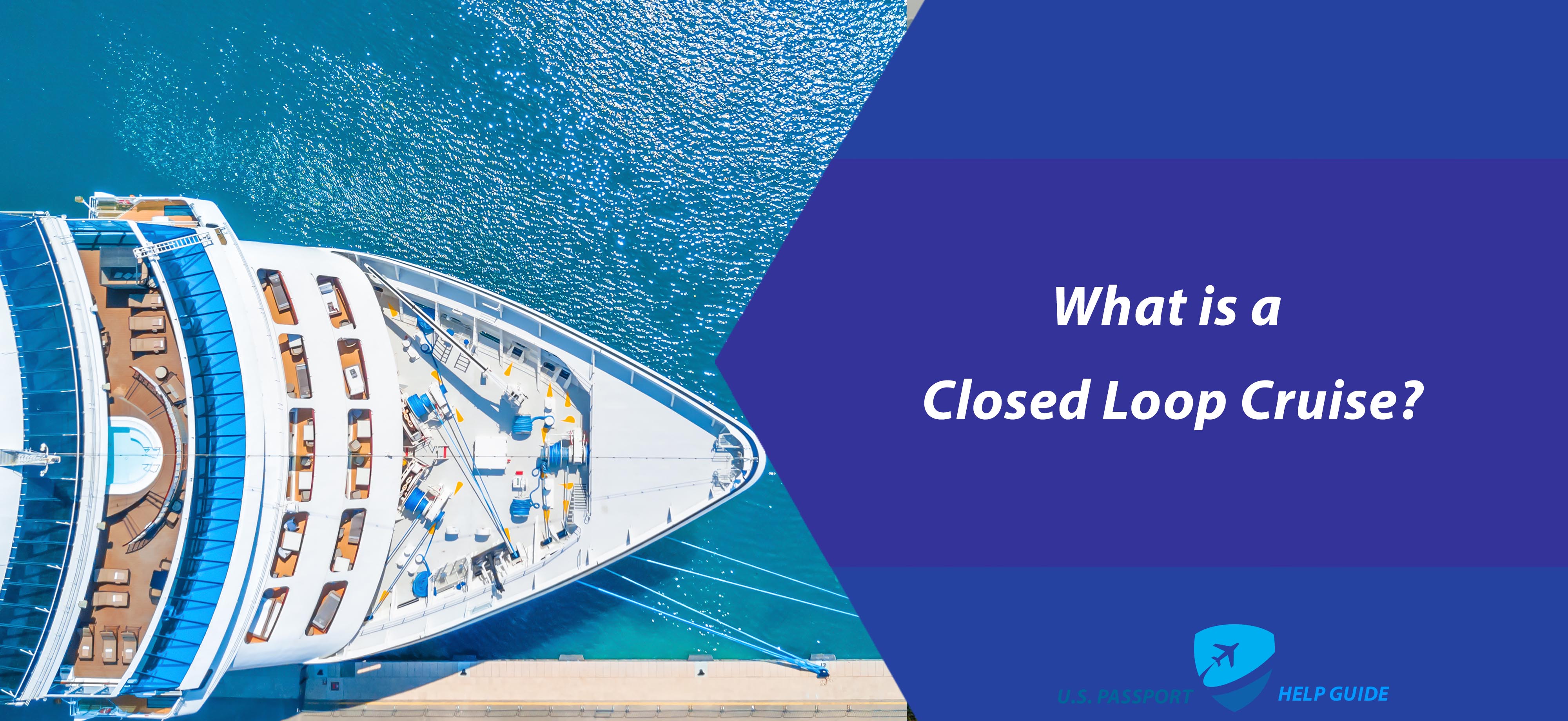
The process of going on a cruise brings along with it a wide variety of different implications that many people don’t think about. When you go on a cruise, you are typically doing so through various types of international waters worldwide. As a result, the United States Customs and Border Patrol will treat the voyage the same way you would if you traveled internationally by plane, for example – and you will have to go through the same process.
TABLE OF CONTENTS
What is a Closed-Loop Cruise?
A very specific type of cruise, however, is a “closed-loop voyage.” It has several benefits that frequent travelers and cruise fans want to know about. As the name suggests, a closed-loop voyage or cruise begins and ends in the United States. As a result, the process is much more straightforward if you are traveling internationally via cruise ship and are staying in one place for a long period.
Closed Loop Cruise Orginates and Ends in the US
The official definition of a closed-loop voyage originates and ends in the United States. However, it can visit contiguous territories or islands that are adjacent to the continental US at any time.
However, it’s important to note that for a cruise to be “closed-loop,” it must begin and end in the same port. Leaving the East Coast and returning to the West would not meet those requirements.
Related: Do You Need a Passport to Go to Mexico? [2023]
Do You Need a Passport for a Closed Loop Cruise?
Are you planning a closed-loop cruise and wondering whether or not you need a passport? The answer to that depends on a few factors. Generally, you do not need a passport if you are a US citizen and the cruise departs and returns to the same US port.
However, if the cruise stops at foreign ports, you may need a passport to enter those countries. Additionally, some cruise lines may require a passport as a form of identification for boarding, even if it is not technically needed for the itinerary. It’s always best to check with your cruise line and the countries you visit to confirm their passport requirements.
Contiguous Territories: What is the Contiguous Rule?
To understand the significance of closed-loop voyages. You must first understand exactly what contiguous territories and adjacent islands are. There is a special rule called the contiguous territory exception that applies to travel between the U.S., Canada, or Mexico.
This allows individuals to enter and exit the U.S. without needing to get a new visa stamp. These countries share a physical land boundary with the United States – in the case of the US, the two contiguous territories would be Mexico to the south and Canada to the north.
What are the Adjacent Islands to the United States?
The definition of adjacent islands is much broader and features various locations. Adjacent islands include the British Virgin Islands, Cuba, the Cayman Islands , Haiti, Trinidad, Tobago , Jamaica , Miquelon, and more.
Any islands that border the Caribbean Sea are called adjacent islands by the US Customs and Border Patrol.
Do Closed Loop Voyages Impact Electronic Travel Authorization?
Electronic Travel Authorization , also called ESTA, is a process that a person must go through to make sure that they are eligible to travel to their destination under the Visa Waiver Program in the United States.
The authorization does not determine who enters the US. Instead, it determines whether a person can travel from the U.S. through various means to their destination of choice.
One of the major benefits of closed-loop voyages is that the US Customs and Border Patrol has determined that. So, as long as the cruise in question meets all of the requirements and definitions of a closed-loop, Electronic Travel Authorization is not necessary for any passenger on board.
A large part of this decision came about due to the fact that these cruises begin and end in the continental US.
Related Read: Do You Need a Passport for a Cruise?
In conclusion, a closed-loop cruise provides a fantastic opportunity to explore the Caribbean or other areas near U.S. shores without dealing with visas and passports. There are so many unique places to discover and experience when stepping on board a closed-loop cruise vessel.
With so many options available, there’s something for everyone onboard these unique vessels. There is no better way to experience cruising than aboard a closed-loop cruise.
Get an Expedited Passport in As Little as 24 Hours!
Looking to travel in 30 days? And need to replace your passport, renew passport or get a new passport. U.S. Passport Help Guide provides all passport expediting services with passport services starting as low $199.00
Related Topics

A Local’s Guide to The Cliffs of Moher, Ireland
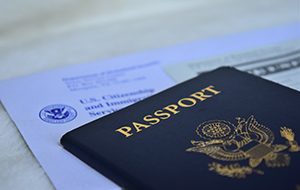
Applying for a Passport at the Local Government Office
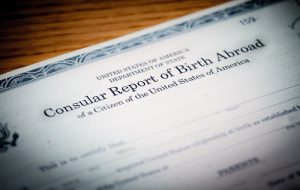
A Child Born Abroad: A Guide For U.S. Citizens With Children Born Abroad
Choose your passport office location, passport services.
- New Passport
- Passport Renewal
- Child Passport
- Passport Replacement
- Name Change
- Lost Passport
- Passport Correction
- Second Passport
- Passport Card
Where to Apply
- Passport Offices
- Expedited Services
- Regional Passport
- Expedited Visa & Passport Directory
- Acceptance Agent
Passport Forms
- Passport Photos
- Passport Requirements
- Passport Fees
- Passport Books
- Passport Applications
- International Drivers Permit
- Travel Visa
Do you really want to delete this post ?

Open Loop vs. Closed Loop Controls
Home » Open Loop vs. Closed Loop Controls
When it comes to test equipment design there are two main types of control available: open loop control and closed loop control. The key difference between these types of control systems involves how they handle feedback.
Closed Loop Control
Closed loop control systems use live feedback to adjust/modify/change the drive command in real time. A classic example of a closed loop control system is Cruise Control in your car. You set a speed, which is your COMMAND value. The car continuously monitors your actual speed, which is your FEEDBACK. This difference, called ERROR, is used to send more or less gas to your engine. If you start going up a hill and slowing down, or down a hill and speeding up, your Cruise Control constantly measures the difference between COMMAND and FEEDBACK and makes the change to the gas pedal in real time. In testing, closed loop controls are used when you want to continuously adjust your movement (for ex. linear cylinder or motor) based on live information at the specimen (for ex. load cell, string-pot, encoder…). Since closed loop controls are more responsive to changes during the testing process, closed loop control systems are more accurate and repeatable than open loop controls. They’re also more complex systems than open loop controls, which makes them a more expensive option that has a more involved implementation process.
It’s important to note that there are various types of closed loop controls, such as continuous closed loop controls and discrete closed loop controls . Continuous closed loop control is as described above, and is necessary when wave-shaping is required (the test specification may require sinusoidal or trapezoidal movements, for example) or high levels of repeatability are needed. Discrete closed loop control also uses feedback but only changes the command when a desired level/value is crossed. This is similar to using a limit switch to stop a cylinder from moving when the switch state changes. You can replace the switch with a load cell or string-pot and stop the move at a particular feedback level. Discrete closed loop systems are simpler in design and more cost effective than continuous closed loop systems.
Open Loop Control
While closed loop control actions are modified by feedback, open loop control systems are merely on/off. They don’t respond to changes during testing the same way that closed loop systems do, which means the operator may not be aware of variations or disturbances that occur during testing. A key benefit to open loop controls is that they’re much simpler systems, which means they’re more affordable than closed loop controls and are easier to implement.
Which One is Best?
Both types of controls have their benefits and which one is best for you can depend on several different factors. For example, if your testing process rarely involves disturbances that can alter your results or quantitative measurement isn’t an issue, open loop controls can be a cost-effective solution. But if accuracy is a critical part of your testing process or it would make more sense to have automated responses to disturbances during testing instead of using human oversight, closed loop controls are a better option. It’s also worth noting that you don’t necessarily have to choose one or the other. Many companies use both types of controls as part of their testing processes.
Need help implementing a new control system for your testing equipment? Innkeeper LLC is experienced in developing complete control systems for hydraulic, electromechanical and pneumatic systems. Contact us for help with your project.
" * " indicates required fields
How Can We Help You?
We listen and understand our customers needs and problems. We deliver solutions for today and tomorrow.
- September 2021
- August 2021
Stay Connected
- InnControl™
Before you go…
Have any questions? Let us know and we’ll be in touch.
- Mechatronics and Motion Control
Open- vs. closed-loop control
Automatic control operations can be described as either open-loop or closed-loop. the difference is feedback..
Arguably the most ingenious tool of the control engineering profession is the feedback loop shown in the Basic Feedback Loop graphic. It consists of five fundamental elements:
- The process that is to be controlled
- An instrument with a sensor that measures the condition of the process
- A transmitter that converts the measurement into an electronic signal
- A controller that reads the transmitter’s signal and decides whether or not the current condition of the process is acceptable, and
- An actuator functioning as the final control element that applies a corrective effort to the process per the controller’s instructions.
In a closed-loop control system, information flows around a feedback loop from the process to the sensor to the transmitter to the controller to the actuator and back to the process. This measure-decide-actuate sequence-known as closed-loop control-repeats as often as necessary until the desired process condition is achieved. Familiar examples include using a thermostat controlling a furnace to maintain the temperature in a room or cruise control to maintain the speed of a car.
But not all automatic control operations require feedback. A much larger class of control commands can be executed in an open-loop configuration without confirmation or further adjustment. Open-loop control is sufficient for predictable operations such as opening a door, starting a motor, or turning off a pump.
Continuous closed-loop control
Continuing the analysis, it is clear that all closed-loop operations are not alike. For a continuous process, a feedback loop attempts to maintain a process variable (or controlled variable) at a desired value known as the setpoint. The controller subtracts the latest measurement of the process variable from the setpoint to generate an error signal. The magnitude and duration of the error signal then determines the value of the controller’s output or manipulated variable which in turn dictates the corrective efforts applied by the actuator.
For example, a car equipped with a cruise control uses a speedometer to measure and maintain the car’s speed. If the car is traveling too slowly, the controller instructs the accelerator to feed more fuel to the engine. If the car is traveling too quickly, the controller lets up on the accelerator. The car is the process, the speedometer is the sensor, and the accelerator is the actuator.
The car’s speed is the process variable. Other common process variables include temperatures, pressures, flow rates, and tank levels. These are all quantities that can vary constantly and can be measured at any time. Common actuators for manipulating such conditions include heating elements, valves, and dampers.
Discrete closed-loop control
For a discrete process , the variable of interest is measured only when a triggering event occurs, and the measure-decide-actuate sequence is typically executed just once for each event. For example, the human controller driving the car uses her eyes to measure ambient light levels at the beginning of each trip. If she decides that it’s too dark to see well, she turns on the car’s lights. No further adjustment is required until the next triggering event such as the end of the trip.
Feedback loops for discrete processes are generally much simpler than continuous control loops since discrete processes do not involve as much inertia. The driver controlling the car gets instantaneous results after turning on the lights, whereas the cruise control sees much more gradual results as the car slowly speeds up or slows down.
Inertia tends to complicate the design of a continuous control loop since a continuous controller typically needs to make a series of decisions before the results of its earlier efforts are completely evident. It has to anticipate the cumulative effects of its recent corrective efforts and plan future efforts accordingly. Waiting to see how each one turns out before trying another simply takes too long.
Open-loop control
Open-loop controllers do not use feedback per se. They apply a single control effort when so commanded and assume that the desired results will be achieved. An open-loop controller may still measure the results of its commands: Did the door actually open? Did the motor actually start? Is the pump actually off? Generally, these actions are for safety considerations rather than as part of the control sequence.
Even closed-loop feedback controllers must operate in an open-loop mode on occasion. A sensor may fail to generate the feedback signal or an operator may take over the feedback operation in order to manipulate the controller’s output manually.
Operator intervention is generally required when a feedback controller proves unable to maintain stable closed-loop control . For example, a particularly aggressive pressure controller may overcompensate for a drop in line pressure. If the controller then overcompensates for its overcompensation, the pressure may end up lower than before, then higher, then even lower, then even higher, etc. The simplest way to terminate such unstable oscillations is to break the loop and regain control manually.
There are also many applications where experienced operators can make manual corrections faster than a feedback controller can. Using their knowledge of the process’ past behavior, operators can manipulate the process inputs now to achieve the desired output values later. A feedback controller, on the other hand, must wait until the effects of its latest efforts are measurable before it can decide on the next appropriate control action. Predictable processes with longtime constants or excessive dead time are particularly suited for open-loop manual control.
Open- and closed-loop control combined
The principal drawback of open-loop control is a loss of accuracy. Without feedback, there is no guarantee that the control efforts applied to the process will actually have the desired effect. If speed and accuracy are both required, open-loop and closed-loop control can be applied simultaneously using a feedforward strategy. A feedforward controller uses a mathematical model of the process to make its initial control moves like an experienced operator would. It then measures the results of its open-loop efforts and makes additional corrections as necessary like a traditional feedback controller.
Feedforward is particularly useful when sensors are available to measure an impending disturbance before it hits the process. If its future effects on the process can be accurately predicted with the process model, the controller can take preemptive actions to counteract the disturbance as it occurs.
For example, if a car equipped with cruise control and radar could see a hill coming, it could begin to accelerate even before it begins to slow down. The car may not end up at the desired speed as it climbs the hill, but even that error can eventually be eliminated by the cruise controller’s normal feedback control algorithm. Without the advance notice provided by the radar, the cruise controller wouldn’t know that acceleration is required until the car had already slowed below the desired speed halfway up the hill.
Open- and closed-loop control in parallel
Many automatic control systems use both open- and closed-loop control in parallel. Consider, for example, a brewery that ferments and bottles beer.
Brew kettles in a modern brewery rely on continuous closed-loop control to maintain prescribed temperatures and pressures while turning water and grain into fermentable mash.
A brewery’s bottling line uses both discrete closed-loop control and open-loop control to fill and cap the individual bottles.
The conditions inside the brew kettles are maintained by closed-loop controllers using feedback loops that measure the temperature and pressure, then adjust steam flow into the kettle and flow pumps to compensate for out-of-spec conditions. Open-loop control is also required for one-time operations such as starting and stopping the mixer motors or opening and closing the steam lines to the heat exchangers.
Simultaneously, finished batches of beer are bottled using open-loop and discrete closed-loop control. A proximity sensor determines that a bottle is present before filling can begin, then a valve opens to fill each bottle until a level sensor determines that the bottle is full.
In general, continuous closed-loop control applications require at least a few ancillary open-loop control operations, whereas many open-loop control applications require no feedback loops at all.
Which is which?
The differences between continuous closed-loop control, discrete closed-loop control, and open-loop control can be subtle. Here are some snippets of pseudo-code to illustrate each:
IF (time_for_action = TRUE) THEN take_action(X) END
IF (time_for_action = TRUE) THEN measure(Y) IF (Y = specified_condition) THEN take_action(X) END END
WHILE (Y <> specified_condition) take_action(X) measure(Y) wait(Z) REPEAT
In the first two cases the time for action usually means that a particular step has been reached in the control sequence. At that point, an open-loop controller would simply execute action X and proceed to the next step in the program. A discrete closed-loop controller would first measure or observe some condition Y in the process to determine if action X needs to be executed or not. Once activated, a continuous closed-loop controller is always ready for action. It takes action X, measures condition Y, waits Z seconds, then repeats the loop unless Y had reached the specified condition. In the discrete case, the specified condition is usually a discrete event such as the completion of a prior task or a change in some go/no-go decision criteria. In the continuous case, the specified condition is usually met when the measured variable reaches a desired value.
Vance VanDoren, PhD, PE, is a Control Engineering contributing content specialist. Reach him at [email protected] .
Key concepts:
- There are different types of control loops and the most critical characteristic that separates them is how they handle feedback.
- The needs of an application should be the primary reason for choosing one type or another.
- In some cases, human intervention may be more desirable than an automatic approach.
www.twobrothersbrewing.com
Read more about control methods below.
Do you have experience and expertise with the topics mentioned in this content? You should consider contributing to our CFE Media editorial team and getting the recognition you and your company deserve. Click here to start this process.
- Fundamentals of cascade control
- Fundamentals of lambda tuning
- Fixing PID, Part 2
- Fixing PID, Part 1
- Feedback controllers do their best
- Disturbance-Rejection vs. Setpoint-Tracking Controllers
- Back to Basics: Closed-loop stability
- Back to Basics: How gain scheduling works
- Understanding Derivative in PID Control
- The Three Faces of PID
Privacy Overview
Connection denied by Geolocation Setting.
Reason: Blocked country: Russia
The connection was denied because this country is blocked in the Geolocation settings.
Please contact your administrator for assistance.

IMAGES
VIDEO
COMMENTS
What Is a Closed Loop Cruise? You might have heard the term "closed loop cruise" in reference to a sailing and wondered what it meant. While it does have to do with the ports on the itinerary ...
A cruise that departs from one port and arrives/ends at a separate port of call is known as an "Open-Jaw Cruise.". Sometimes they're referred to as "Open Loop" or "Repositioning" cruises. While these ocean trips on the high seas require a passport, you can access many more countries.
Passport Requirements for Closed-Loop Cruises. If you're a U.S. citizen taking a closed-loop cruise, you can use a government-issued photo ID card and a birth certificate, a Consular Report of Birth Abroad, or a Naturalization Certificate as proof of citizenship. But if you have a passport, it's always best to use it.
Closed-loop cruise: A closed-loop cruise typically doesn't require a passport since it begins and ends in the same U.S. port (though there are some exceptions to this rule). Example: Royal ...
A closed-loop cruise is a cruise that departs and ends in the same U.S. port, for example, Fort Lauderdale to Fort Lauderdale, or round-trip to Alaska from Seattle. These cruises have to meet certain criteria to qualify. Every voyage on a ship that's not U.S. flagged, departing from and returning to a U.S. port must, according to maritime law ...
Open Loop vs. Closed Loop Cruises. An international cruise is distinguished between closed loop and open loop cruises for travel document purposes. A closed-loop cruise starts and ends its voyage at the same U.S. port and only travels within the Western Hemisphere. By contrast, an open-loop cruise starts its voyage from one U.S. port but ends ...
Closed-loop cruises are those that start and end at the same U.S. port and travel within the Western Hemisphere. U.S. citizens booked on those sailings can leave and enter the country with proof ...
A cruise that starts and ends in different ports in the United States (such as Miami and Fort Lauderdale) is not considered a closed-loop trip. Typically, a closed-loop cruise would leave from Miami, Florida, make her way to Bermuda and the Caribbean, and then return to Miami. Miami, Florida, is home to an MSC cruise ship.
A closed-loop cruise is a cruise that departs from and returns to the same U.S. port and remains in the Western Hemisphere. As such, it does not require the passengers to have a U.S. passport—even if the itinerary visits some international ports along the way. According to U.S. Customs and Borders Protection (CBP), rules established by the ...
Closed-loop cruises are those that depart from and return to the same U.S. port. Excursions of this kind may range from a round-trip from Seattle to Alaska to a cruise from Fort Lauderdale to Fort Lauderdale. These cruises need to meet a slew of criteria before being accepted. According to maritime law, any trip on a ship that is not flagged by ...
An open-jaw cruise is a cruise that begins in one port and ends in a different port. These are a lot less common than a closed-loop cruise. You will find the most number of open-jaw cruises in Alaska. For Alaska, northbound cruises the cruise typically starts in Vancouver, Canada and ends in near Anchorage, Alaska in Seward or Whitter.
All closed loop cruises are round-trip cruises from the same port in the United States. Places You Can Go on a Closed Loop Cruise (Without a Passport) Even though closed loop cruises can't take you wherever you want to go, the destination choices may be more diverse than you'd expect. From the beaches of the Bahamas to the wilderness of ...
Closed-loop cruises start and finish at the same United States port. Cruises that don't begin and end in the same port are not considered closed-loop cruises. An example would be one that starts ...
Yes, open loop and closed loop cruises each attract different types of travelers based on their preferences. Open loop cruises are often favored by those who enjoy variety, exploration, and visiting multiple regions, while closed loop cruises are more suitable for individuals seeking a focused and in-depth experience in a single location.
U.S. citizens on closed-loop cruises (cruises that begin and end at the same U.S. port) are able to enter the United States with a birth certificate and government-issued photo ID. Please be aware that you may still be required to present a passport to enter the countries your cruise ship is visiting. Check with your cruise line to ensure you ...
A closed loop cruise refers to a roundtrip journey where the cruise ship departs from and returns to the same port. Unlike open-jaw cruises that start and end in different ports, closed loop cruises allow passengers to board and disembark at the same location. There are several benefits to choosing a closed loop cruise.
The official definition of a closed-loop voyage originates and ends in the United States. However, it can visit contiguous territories or islands that are adjacent to the continental US at any time. However, it's important to note that for a cruise to be "closed-loop," it must begin and end in the same port. Leaving the East Coast and ...
A closed-loop sailing is a cruise ship voyage that begins and ends at the same port and in the same country. It is the most common type of cruise offered by cruise lines because the logistics for passengers is very simple for getting to/from your cruise. By beginning and ending in the same port, roundtrip flights can be arranged and anyone that ...
Open Loop Control. While closed loop control actions are modified by feedback, open loop control systems are merely on/off. They don't respond to changes during testing the same way that closed loop systems do, which means the operator may not be aware of variations or disturbances that occur during testing. A key benefit to open loop ...
Open- and closed-loop control combined. The principal drawback of open-loop control is a loss of accuracy. Without feedback, there is no guarantee that the control efforts applied to the process will actually have the desired effect. If speed and accuracy are both required, open-loop and closed-loop control can be applied simultaneously using a ...
Cruise ships accounted for approximately 90% of these discharges. Although a hybrid scrubber is compliant with current local regulations as this system can switch between operating in open-loop and closed-loop mode, it is insufficient to avoid harming aquatic species. To fully prepare for a sustainable future and comply with future strict ...
Open is the complete opposite. Starts in miami and ends elsewhere. You will need a passport for this type if you stop anywhere not in the US. Closed you can travel with BC and driver's license Starts in Miami and ends in Miami. My understanding is that if you embark at port A but disembark at port B, you need a passport.
Question: Problem 1.1(Open-loop vs Closed loop) Describe differences between open-loop and closedloop control. You might explain the differences of open-loop and closed-loop control in a certain example, but use an example other than a cruise control example presented in the lecture note.
Demystifying open loop and closed loop recycling, what is the difference? Not just buzzwords, open loop and closed loop are important frameworks to consider when you are designing a product for the circular economy. In this episode, Belinda explains the difference. Tune in! For all the show notes, including any links to resources mentioned ...